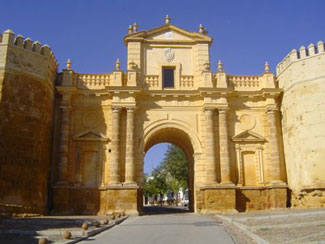
It is not surprising that The Book of Inter-religious Peace, in Word and Image, is difficult to accept, though people are talking and writing about the necessity of inter-religious relationships and numerous conventions are held on the subject.
So that the project can be comprehended, the reader and seer of The Book need to accomplish a tremendous leap of consciousness.
The seeker of inter-religious peace must fulfill inner psychological transformation and abandon the animal nature which tends to grasp the world by means of territorial views, conditioned by the criteria of space and time. We are educated to approach the external world by the pertinence to the family, social layer, color, religion, profession, nation, continent and even planet and galaxy…
One sees the other through the curtains of learned pre-concepts, generally assuming that the other is of lesser significance and therefore lacks absolute truth.
The Book wishes to break through dogma and the writer believes in a deep and nearly absolute truth – God, by definition of HIS infinity, does not have a passport. As the Creator, The First Source – The Divine is Ever- Existent and therefore is not born and does not die.
The finite characteristic of all creatures is perhaps the real cause of the "stratum thinking", needing belonging as a security tool.
As each born creature, necessarily has his parents, the believers have adopted their different Gods as unique parents.
The Book, from this point of view, may offer a challenging content – It follows the Infinite and overt Character of the Divine and thus considers all religious trends as infinite paths towards the exploration of The Essence.
Each path contributes a small piece to the building of an interminable puzzle or worship system, within the fleeting time/space frame, towards the attempt to grasp Infinity.
Finite human minds are unable to grasp Infinity solely by the mental faculties, which are limited to a certain intelligence quantity.
The only Way to attain a grasp of Infinity is by developing something which is not hindered by obvious limitations.
The Book suggests evolving the Wisdom of the Heart by considering the life of the great mystics and their appreciation of God's fingerprints in Nature. One may, therefore, cultivate the Way of Love, unconstrained by comparison, hierarchy, and pre-concepts, usually existent in territorial thinking.
The concise wording and non-decorative imagery, serve as equivalents to the religious and spiritual credos, and wish to mark the interminable inter-linking among all main beliefs, considering these as fragments yearning to FEEL rather than UNDERSTAND the Divine.
If mental intelligence is forcefully limited, the emotional intelligence – is unlimited. One can always exercise Love and Compassion towards all co-livers of Earth, be they human, animal, plants or minerals.
When we feel LOVE, we naturally erase all separating notions – male versus female, nation versus nation, and color versus color.
The emotional system, when loving, tends to seek and find common denominators reigned by empathy and altruism.
In such affective state – we do not deter the differences but seek and find Communion.
Compared to a part of a Virtual Celestial Garment, in which all parts are meaningful, all parts can be felt as micro aspects of an Infinite Macro and therefore the work of interlinking among the different credos is of equal importance. The Virtual Celestial Garment is made of parts and correspondent joints.
~*~*~*~*~
The Perspective of The Book of Inter-religious Peace is based on seven interlinked facets: Personal, Academic, Artistic, Psychological, Philosophical, Theological and Spiritual.
Forced to continuously change nations, cultures and schooling - I had to develop a wider sense of communication, which stresses the common denominators rather than the separating traits.
The fleeting landscapes and land souls have triggered the search for the Eternal by means of the transient. In a paradoxical way, looking for the common denominators in cultures, has abolished generalizations and increased my effort to decode the uniqueness of individuality everywhere, anytime.
Gradually, people, the animal and plant kingdoms, as well as other phenomena in nature, stopped belonging to definite and closed categories. Each living being became an Entity per se, a unique manifestation, an entire world to be decoded within the corresponding dynamic space and time criteria.
All pre-concepts or prejudices had to be abolished, so that "the other" is grasped as “Is” – Unique and inter-linked with everything existent. Paradoxically, learning to get rid of generalizations, when contemplating and interacting with the world, has prompted the process of inner individuation and self sufficiency. The need to pertain to a specific ethnic, professional or religious cadre has decreased till its complete annihilation.
Free of the system of categorization, the opening of the metaphoric gate has occurred. Reality has revealed itself with all the richness of its hues and sub hues.
The Book of Inter-religious Peace is the product of a 40 year philosophical, theological and artistic quest.
So that the words and images of the book entice the reader to implement inter-religious tolerance, it is suggested to attempt jumping over the mental fences, made of idiosyncratic territorial modus Vivendi, and reach an inner metaphorical Field. In this visualized field - trees, bushes, savage flowers or herb - grow according to the chaotic and harmonious instinct of Nature, regardless of the continuous and frenetic human aspirations to decode Nature by means of methodology and systematization.
The dogmatic faiths tend to subdue The Divine by means of the same systematization and categorization.
The Book of Inter-religious Peace has been inspired by all religious trends that stress the Unfathomable, The Infinite, The Universal and All Including aspects of Divinity. Denominations and Curriculum of the Divine vary according to the cultural context. We could perceive in the existing religious variety different paths to attain The Ineffable. Each path is more than legitimate, as long as it does not consider itself, as the holder of an exclusive and absolute truth.
What is more, the acquaintance with the different paths only enriches our gamut and makes the experience of the Infinite and Ineffable – more graspable.
The Book of Inter-religious Peace suggests practicing religious tolerance by applying religious pluralism which forcefully reflects the All Including Essence of God.
The most meaningful vehicle of tolerance might be the Way of Love, unhindered by comparison, hierarchy or pre-concepts.
The paintings of the book may be seen as the affective counterpart of the text. The imagery wanders between abstraction and realism to suggest the interaction of Spirit (Heaven) and matter (Earth and the complexity of its phenomena).
~*~*~*~*~
The main characteristic of my research is the relentless desire to confer legitimization to the individual reasoning and experiencing the world. (Forcefully this profound interest in the individuum has been prompted by the studies of phenomenology – mainly Husserl, Sartre and Merleau-Ponti, the University of Geneva, the end of the sixties.) A legitimization to explore the individual spirit confronting reality enables to walk an unmarked path while always exercising tolerance towards the different. Applying tolerance means the ability to abolish any artificial hierarchy, which always is a direct product of permanent, static, predefined territorial conceptualization. Adopting a non-hierarchical way of experiencing reality assists in overcoming the usage of habitual, a priori ideas belonging to a system of categorization.
The interdisciplinary character of my research is an outcome of a strenuous cultivation and evolvement of the process of individualization as well as the continuous attempt to avoid hierarchical thought or an a priori system of categorization. Nevertheless, I have exercised a basic theoretical discipline based on academic methodology, values and appropriate referential source. This complex and dynamic methodology has enriched my students by widening their vision, reference abilities and innovative context.
I have worked on three seminaries on Mannerisms in Italy during the 16th century for the M.A. degree in Tel Aviv University. These seminaries were handed at the time to Professor Asher Barash, Prof. Mordechai Omer and Prof. Gila Ballas. These papers have actually paved the road to the research thesis on "Caravaggio as a Modernist."
Mannerists shifted from the tradition of their era by the way they depicted the traditional subjects. They chose to break the inner laws of time and space by distorting size, perspective, and lightning. Furthermore, they challenged the hierarchy of the iconographic figures, indirectly revolting against religious dogma. In fact the Mannerists belonged to a closed group of metaphysicians inquiring alchemical secret path. Alchemy, as many other esoteric traditions, rather tends to emphasize the inner metamorphosis of the seeker of Truth than the corpus of religious fixed precepts and prohibitions.
These consecutive seminar papers attempted to demonstrate that the Mannerists sought an individual freedom of expression, by deviating from the traditional formal language, while still following the rigid rules of iconography. The outcome was extremely surrealist: they introduced an intentional pictorial chaos and asymmetry causing confusion between major and marginal motifs.
The bizarre mannerist way of treating traditional art topics, wobbled the earth of the believers by introducing them to the world of the Unknown, Enigma and Mystery beyond time and space criteria, beyond the knowledge of Man and beyond all dogma.
The Mannerists paved the way to the work on Caravaggio as a Modernist.
Kibbutz Hameuchad Publishing House, 2000, based on the M.A. thesis, Tel Aviv University:
The thesis suggests seeing Caravaggio, a 17th century Italian artist, as a modernist. Modernism, in this sense is not grasped by style dependent on the criteria of time and space, but rather as a philosophical and psychological value based on the being and thinking of the subject. The book traces Caravaggio’s unique personality and examines how his subjective perception is reflected in his paintings.
Caravaggio was committed to the traditional religious and cultural Catholic iconography. Still, the way he chose to represent the authorized themes, indicates a deviation, not only in a formal way but also in the contents. Thus, the artist challenges religious dogma by expressing his own concerns about personal compulsion, uncontrolled impulse and existential anxiety.
Unlike religious dogma, which forcefully draws a clear line between precepts and prohibitions, virtue and vice, Caravaggio annihilated the polarization of virtue versus vice. In his pictorial works darkness and light, beauty and ugliness, yearning and aversion – all intermingle and form one inseparable unity miming Reality, as it is.
The PhD thesis bridges, in hindsight, between “Caravaggio as a Modernist” and The Book of Inter-Religious Peace Zen Buddhism, similar to Hindu Tantra or Chinese Tao, suggests a philosophical and a spiritual path, based on theory and practice, as means to evolve the seeker of awareness and enable him to grasp Reality as it is. In order to attain such a noble goal, the seeker attempts to gradually free himself from conventional Modus Vivendi, dictated by space/time criteria. By its nature, convention is static while Reality is an infinite flux of appearing and disappearing phenomena. The way, though to inner liberation is extremely complex, as one is forced to leave behind the familiar, prejudice and dogma and instead, explore the unfamiliar, novelty and tolerance. The mind/soul shifts from repetitive convention to the flux of Reality, anchored in the Unknown.
This research is a direct consequence of its antecedents. The Mannerists, as well as Caravaggio, function as significant milestones in breaking the linearity of Western history of art. Zen Buddhism suggests a non linear path in order to avoid the trap of subjective illusory reality and render possible the infinite spiral and spectrum of Being.
Installations in a learning environment – a philosophical and educational perspective – Research for Mofet Institute under my supervision and with the collaboration of Dr. Dorit Tubin (Tel Aviv University) and Nili Drori (The of Art and Science Center, Beit Berl Academic College), 2001.
The research is built as a pyramid in which Zen philosophical insights forming the base. The Intermediate layer is written by the psychologist Dr. Dorit Tubin, who was asked to find parallel theories in child psychology to the preliminary Zen insights. The top of the pyramid is documentation by Nili Drory, the director of the Art & Science Center. She provided the practical application of the philosophical insights and psychological theories in the installations environment.
Key ideas dealt with along the research:
* Observing children play in the installations environment apparently with no adult intervention to foster the spirit of adventure.
* The importance of a non-defined mechanism of the installation, as a trigger to creativity.
* Enhancement of playfulness as a tool for finding practical solutions to obstacles.
* A way to increase alternative points of view, thus enlarging the perspective of things and increasing the spirit of improvisation.
In retrospect, it seems that the effortful study and research domains have culminated in the project of The Book of Inter-religious Peace in word and image.
The research and art are founded on side trends of the great religions of the world. Paradoxically, these side trends emphasize the universal rather than a corpus of dogma, the prayer of the individuum rather than ritual, an immanent Savior rather than a transcendent one. The aim is to reveal and build the inner Temple.
As we build this inner temple, by gradually expanding consciousness, we give up territorial separating factors, phase by phase. Furthermore, we learn to develop the affinity of co-living and cooperating, thus participating in the endless creation of The Divine.
Surprisingly or not, the side trends of the great religions have much more in common than the main religious streams. By the authorization and encouragement to cultivate the Individual Inner Temple, the Universal archetypes of Belief are revealed. Likewise symbolism, pertaining to the different religious side trends, has wondrous similarities. We can refer to Hindu Chakras and to the Kabala Tree of Spheres and equally learn about the Path the believer has to perform in order to perfect the body, mental abilities, feelings and energy or spirit. Only after perfecting these four dimensions, can they experience outer Reality harmoniously and become one with The Creator and Creation. St. Francis' Heavenly Ethics resembles Rumi's Sufi Spirit of tolerance and aperture to the earthly life.
The side trends are presented by their respective traditional iconography but every section relates to the other and all of them form a metaphor for the ever yearning of the human to grasp the Ineffable.
The following academic support, written by different professors, adds to the meaningful contribution of the project towards a variety gamut of learning domains.
Prof. Emeritus Gila Ballas - Art History Department, Tel Aviv University
Prof. John Byle - Head of Fine Arts Department, Bezalel Academy of Art and Design
Prof. Yoav Elstein - Literature of the Jewish People Department, Bar Ilan University
Distinguished Prof. Izhak Rubin - Electrical Engineering Department, UCLA
Prof. George J. Kanazi - Arabic Language and Literature Department, Haifa University
Distinguished Prof. Arie W. Kruglanski - Psychology Department, University of Maryland
Dr. Aharon Seindenberg - President of Beit Berl Academic College
~*~*~*~*~
The artistic facet and support includes an unending account of the creative mind-soul life: research, experience, practice, contemplation, simplicity, observation, aperture, basic values, intuition, instincts, manual labor, gardening, care of animals, care of people, balance of harmony and disharmony, rest, adventure, ethics, exploration, daily revelations, endurance, Faith.
The artistic support of three inter-disciplinary authorities writing on the art works of The Book of Inter-religious Peace and their contribution towards the better understanding of the creative soul.
I met Dorit Kedar, the art critic, in the eighties. At that time I was the manager of two leading Tel Aviv art galleries. As her art criticism was both informative and innovative, she built during 20 years of writing, a rich compendium covering Israeli art, International art, themes in archaeology and mythology. This rich material in the archives of the Israel Museum, Jerusalem, The Tel Aviv Museum and Zifer Center, Tel Aviv University, continues to be a source of learning for students.
As an art lecturer, Kedar has developed a unique teaching methodology by enhancing the creative abilities of her students. She fosters both analytic rationalization and free associative thought, exposing the learner to the multi-cultural, scientific, ecological, and other relevant themes. She also emphasizes the importance of an accurate and focused wording while requiring the ability to translate the abstract idea into a visual equivalent – diagram or any subjective symbolism.
The project of The Book of Inter-religious Peace is a testimony to Kedar’s accumulated philosophic and theological knowledge, a strong intuition allowing her to see the common affinity trends within the major religions as depicted in the book and the artistic feat, and expressed by means of a basic, though multi-layered, iconography.
The religious series are entirely autonomous, but at the same time they relate to each other forming a continuous indivisible Whole, revealed by the practice of Tolerance.
The hierarchic and polar mind is induced to empathy by the universal imagery of traditional archaic symbolism, plants, abstraction, animals and multilingual calligraphy. The seer may wander through the different series, encountering his own principles of faith latent in the different belief systems, thus participating in the endless spiritual journey towards Mystery.
The Book of Inter-religious Peace has been on display in significant international centers of reconciliation and has contributed to the widening of the internal spiritual consciousness, thus leading to practicing effective tolerance.
Irit Levin
Art management, advice and curatorship
~*~*~*~*~
Rarely does one person encompass such holistic and explicit abilities – intellectual curiosity and rigor, original creativity, and spiritual strengths. Dr. Dorit Kedar is an art historian whose fields of knowledge range from contemporary post-modern western art to ancient far-east Asian art and culture. Her art works (paintings and sculpture) blend traditional methods and themes with contemporary techniques and ideas. Her teachings, as a spiritual guide, serve as a pillar of strength for many students, formal and guests.
I have known Dr. Kedar over the past decade. She is a unique voice in our art college, a much beloved teacher, and an original scholar. Kedar’s methodology is based on intertwining what for many seem unbridgeable opposites: theory and praxis, east and west, ancient and new. Her Book of Inter-religious Peace is an example of this fine blend.
In a world that is drawn to abrupt action and different kinds of chauvinism, Kedar, with her forceful drive to explore and offer peace and understanding through art – both as a theorist and artist, serves as a shining example that diligence, respect for the other, and creativity can, and should, aim towards a better world.
Gilad Melzer
Chair, Department of Art History and Theory
"Ha’Midrasha", Beit Berl Academic College, Israel
~*~*~*~*~
Dorit Kedar is a Renaissance woman who employs visual art with the aim of emphasizing the black holes of human non awareness.
I met Dorit when we had studied together in the Art History Department of Tel Aviv University during the seventies. She has initiated her art history studies after completion of the Diplome d'Interpretes and the BA in philosophy, The University of Genève, Switzerland. Her thesis, "The proof of God's Existence," already reflected her deep interest in the theological domain. However, her non territorial controversial perception has raised opposition within the academic cadre.
While living in Boston, I was not surprised when Dorit called and asked my assistance in providing academic references for her M.A. thesis proposal – "Caravaggio as a Modernist " – at that time an unexplored terra. The Faculty of Art in Tel Aviv did not confirm such a thesis, which, according to their opinion, had no precedent in art history research. Only after I have supplied a relevant transcript of Frank Stella's series of lectures re Caravaggio as a modernist at Harvard University, the Tel Aviv University has consented to confirm the thesis proposal, which later on has been published as a book.
Her doctorate thesis, "Zen Buddhism as Means to Increase Creativity" for Union University was likewise outstanding. The project had envisaged Israeli artists naturally apt to comply with Zen insights adapted to the local visual language.
Many books were written and are still being written on religions, on the subject of God's history, and about the inter-relationship between religions and their Divinities. In fact, these themes tell the story of the human race.
The Book of Inter-religious Peace by Dr. Dorit Kedar, though referring to these issues, is, as all previous artistic and theoretic endeavors, different.
The book presents to the reader an overall view of esoteric trends deriving from the main universal religions: Judaism, Christianity, Islam, Buddhism, Hinduism and Tribal Faith. The various trends – Kabala, Spirit of St. Francis, Sufi Flowers, Zen Meditations, Chakras, and American Indian Shields – are not conceived as separate entities but as an interminable chain in time and space of the human expression of belief.
The Book of Inter-religious Peace consists of diverse series of visual images painted and sculpted by the author. The imagery, a result of years of research, communicates beyond concepts and thus speaks a universal language. Similarly to the imagery, the wording is reductive and precise touching the Essence. Thus the words tend to become visual. This methodology encourages abolishing of the fictitious common perception and accordingly, there is a separation between center and the peripheral. The book suggests that all phenomena, including religious convention, are but infinite finite fragments yearning towards Infinity.
There is a philosophical interlinking among all series : The Kabala Spheres wish to overcome polar thinking by the constant search of equilibrium; St. Francis' Way emphasizes the natural flow among body, soul, mental abilities and Spirit; The Flowers of Sufism deals with the subject of acceptance of otherness; 22 Zen meditations to stop linear time suggests the path to achieve inner salvation; while the Tantric series provides practical tools to enlighten the Path; Toltec Animal Shields stress the meaning of all earth creatures and the tribal spirit of earth pays tribute to the wealth of the planet.
All the above written suggests a way of life and death rather than living because one was born.
Dr. Shlomit Shaked
Art Historian and Theorist
~*~*~*~*~
Abstract: Psychological Foundations deal with:
I. The efficient system of accumulation of knowledge by gradual transmutation of thought-feeling-energy.
II. Methodology: non-preferential approach, replacing territorial views by the essential outlook of Sharing.
III. The need to check personal fixations and conventional dogmas: fighting the a priori tendencies of the mind, sharpening the process of individuation, revealing the sense of playfulness and adventure, non separateness between the aim and the path.
IV. Alternative Spirituality: Instead of stressing the importance of an ethnic and national God – the Simple but Complex Understanding that the notion of The Creator is in itself – All Including.
Keywords: Psychological Foundations of The Book, Preparing the Soil of the New Era Believer.
Four Pillars may symbolize the encompassing work of The Book of Inter-religious Peace:
I. Accumulation of Knowledge.
II. The Inter-linking Exploit.
III. Breaking through conventional concepts.
IV. Social Awareness and Universality.
My childhood and youth years were characterized by constant change of cultures and languages. To overcome the difficulties of drastic change, I was forced to develop the spirit of adaptability and multilayered communication.
Knowledge accumulated from diverse sources was integrated by Focusing, so as not to fall into dispersion and confusion. Like the system of breathing, inhalation may symbolize the accumulation of information while exhalation stands for the integration by focusing.
Thus the two intertwined aspects of knowledge may be visualized as a cross. The horizontal line points out the non-limited line of the potential personal enrichment by the world of phenomena, and the vertical line denotes the effort of renewal.
In other words, the horizontal line equals the world of empiric phenomena and multiplicity, and the vertical line attaches multiplicity to Oneness.
The effort to unite Multiplicity with Oneness demands a non-preferential observation, a non-tinted disposition of mind.
The capacity to transform the principle of possession into the Spirit of Sharing and Communion.
The non-preferential observation enables us to grasp the concrete and intuit the abstract, with no interference of prevalent fixations of mind.
Exercising a liberal open-hearted disposition reveals multiple truths. Each may serve as an additional stone which builds an interminable pyramid of the Human Heritage escalating towards the infinite variety of Unison
The Principle of Possession into the Spirit of Communion is Evolved by the Agility of Mind may be attained by situating ourselves on the ever-altering imaginary borderline between the already-known and the not yet known.
Such an attitude stimulates and triggers curiosity, creativity and the associative mind while dimming the comfortable and easy recurrence on routine and habit.
In fact, judgmental and exclusive ideas, claiming to hold one sole Truth, turn us into prisoners of the presumably known.
Knowledge, as here proposed, is a constant light tread in the invisible and progressive path between the Known and the Unknown.
Adapting the walk in the borderline, we may experience a more colorful and complex Reality, opening the gates of the multicultural and interdisciplinary advent.
Breaking through conventional concepts requires mainly an attitude, which takes in consideration the following three aspects:
* Elimination of a priori concepts.
* The Process of individuation.
* Playfulness and adventure.
There is a meaningful difference between the reference to past experience or cultivating the experimental attitude. Choosing the experimental attitude does not mean the erasing of past experience.
As Life is dynamic and concepts, by definition, are static-past experience should be transfigured and serve as a departing point to develop new conjunctions.
The experimental attitude may be coined as the everyday bread of the creative mind.
The process of Individuation fosters the liberation from the clan protection system. As evolving creatures, we need the warmth of Mother’s Lap physically, emotionally and mentally. Later on Mother’s lap is sensed as the family, the school or any other social frame.
The Evolving Mind has to do all efforts to abandon the support system of the initial social frame, skip over the fence, step aside, and assume all responsibilities as a unique human being.
As such, communication with the other will be assumed by usage of Observation rather than a priori opinion or stigma.
Playfulness or the spirit of adventure does not differ between the goal and the process. Moreover, the process itself, serves as a temporary dynamic goal.
The playful and adventurous Mind is more apt to appreciate and enjoy the options of the Unknown.
Learning to flow towards the non-recognizable turns the Mind flexible, unattached and prompt to escape repetitive patterns of behavior.
A playful Mind always seeks unexplored fields in order to cultivate, polish and refine the abilities of detachment.
It is a fact that the human being, wishing to determine the primary cause of Existence in hope to find a meaning to Life and Death – turns to the Divine.
Each culture, during the known history of the humans on the Planet Earth, has developed its own concept and image of the Divine (e.g., the variety of Fertility Goddesses in history).
The threads of time and space weave the fabric of myths. The different myths reflect basic characteristics of the human nature, and these find their expression in institutional religions.
Human basic characteristics might be conceived as:
* Separateness differing between Me and the Other.
* Animal survival instinct emphasizing the Me.
* Inherent need – to legitimize the animal struggle for predominance by usage of the exclusivity of religions.
* Thus, the three institutional religions that are related to Patriarch Abraham, claim to sustain The Ultimate and Only Truth.
* Jews believe they are the elected people of God and that the Old Testament is the only sacred book.
* Christians believe that the new Church has replaced the blind old Synagogue and that the Old Testament is but a pre-figuration of the new one.
* Moslems claim that Allah the Almighty is generous towards the followers of the Law and that Islam has found the true path while Jews and Christians have gone astray.
The Divine, in the eye of the beholder, acquires a biography, iconography, corpus of prophets and saints, in line with the concrete imagery of the respective believers.
The Ineffable Infinity, The Absolute Truth is approached by a fragmented human mind dependent on time and space. Thus the source of all religious wars is the fervent insistence of the limited mind, preaching to possess the one and only faith. It is therefore not surprising that a vast number of believers continue to kill each other, maintaining to hold the exclusive banner of Truth.
Unfortunately, the bloodiest assassinations in human history have occurred because of religious wars, when followers of belief “a” massacre followers of belief “b.” Martyrdom characterizes all religions. Followers of belief “a” sacrifice themselves or others to maintain religion “a,” and not convert into “b.”
Religions everywhere teach their youth about the heroic heritage of their saints and martyrs, who preferred to die for “a,” than to live in “b.” This tragic condition is, as above mentioned, the direct result of turning the Ineffable Infinite Divinity into a finite being, shaped by a limited mind triggered by the principles of possession and polarity (virtue versus vice, me versus the other…) Moreover, the individual, seeking for a secure territory, tends to follow a power group in order to affirm his own identity.
The formation of ethnic religious groupings entails the formulation of dogmatic generalizations, which serve to distinguish between the “We” (friends in destiny) and “They” (fiends in destiny). Nevertheless all generalizations are forcefully static and therefore are totally in contrast to the Essence of the World which is in continuous motion and change. As such, the world is a reflection of the Creator, which is the Ungraspable.
* We, the creatures, have a Common Source – The Infinite Creator.
* All creatures are mere reflections of the All Including Abstract Oneness (The Void, The Essence, The Seed, The Source, The Ultimate, Infinity…)
* The Infinite Abstract Oneness is manifested in the concrete world of creation by an infinite number of apparently finite creatures, phenomena and belief systems.
* Reconsideration of the infinite natural phenomena and a sincere attempt to abolish remnants of separateness, polarity and dogma will appease hatred and fortify the spirit of sharing and interconnectedness.
May these Four Pillars bring forth Reconciliation.
~*~*~*~*~
I. God is the Creator of Everything and Everyone within space and time.
II. God, as the Creator of space and time, is therefore also reflected in space and time forming part of Creation, but God is beyond space and time, as the Ultimate Creator.
III. To reach the Divine means to break defined patterns of mind, dictated by space/time criteria and grasped, wrongly, as fixed and solid phenomena. Space and time, or the here and now, through their dynamic change, reflect what exists beyond – The Eternal Infinity.
IV. Contemplation, encapsulating the spirit-mind-soul and body, should practice, constantly, the fleeting, the passage of everything existent, and remain overt to the mirrored phenomena appearing and disappearing.
V. Paradoxically, to experience the Divine, one has to cultivate a dynamic stream of awareness, very much like the passing phenomena themselves, and avoid the temptation to reside in one sole and unalterable truth.
VI. One of the most precious vehicles to help break defined patterns of mind is exercising the capacity of understanding, love and assistance to the familiar, as well as unfamiliar, surroundings everyday anew. Practicing the virtue of Mercy makes the soul aware and alert, training it to be all-including by increasing temperance and inner harmony. These latter two virtues avoid fixations and enhance the streaming of awareness so that it becomes like the passage of everything.
VII.The Book of Inter-religious Peace has chosen certain religious paths and, through them, proposes the various ways to overcome polarities (pre-concepts, fixations) so that awareness transmutes and melts within transience reflecting Eternity.
~*~*~*~*~
As clarified in the previous sections, one of the goals of The Book of Inter-religious Peace is to demonstrate in concise word and image the path to Eternity through transience of the fleeting here and now. The beliefs exposed in this book as models, have a common denominator – to widen the mind so that it forms an inseparable part of the fleeting here and now.
Transience is forcefully dynamic, making us walk – consciously or not – towards the unknown. Any fixations of mind build obstacles, which keep us fenced within an illusionary reality, a product of imagination, which has nothing to do with Change or Reality, as is.
Experiencing transience means walking towards the unknown the next minute. The practice turns the unknown into a modus vivendi. The mind/soul, challenged by the infinite alternatives of transience, becomes acquainted with non-terminable, gradually unveiled, filaments, spreading further and further. The believer, who consequently reveals the secrets of transience, is the one to be enlightened by Infinity, which is, paradoxically – Eternity. In fact, the greatest attainment of the walker in the unknown of every day (nature of Creation), is to form an indistinctive part of the One Infinite Unknown (nature of The Creator).
An extensive clarification of the series will serve as an introduction to the pictorial series.
~*~*~*~*~
The spiritual support is of an indispensable crucial role for the future journey of the book as the eminent writers actually help in paving the way towards the implementation of the concept of Tolerance in praxis.
Our generation lives under the Internet regime. The so-called mass media have never been as prolific or disturbing. Everywhere, under any circumstances, right and left, people use these means to communicate and yet they have never got together so infrequently. These interchanges have never been technically so accessible, but the messages sent are generally vain and empty. The paradox, at a deeper and more serious level, is that men have never asked themselves so anxiously about the nature and the possibility of a dialogue, mutual comprehension and tolerance. These subjects are reconsidered again and again in a myriad of seminaries, colloquies, and all kind of encounters resulting in relentless debates that end up as dialogues of the deaf. This effervescence is incontestably the sign of a profound dissatisfaction, a deep nostalgia, and a desperate sensation of lack of communication.
This lack is even more cruelly resented when the debate deals with the most essential: the destiny of man, the reason for his existence, his finality and his faith. The great merit of the intuition that has inspired the book by Dorit Kedar is her proposal towards a sublime convergence of signs of faith for those who have perceived the prevalence of the spiritual life. In spite of the multiplicity of their expression, she does not hesitate to confront at one go the diverse experiences of religious life.
First of all, she asks to consider the testimony of those who have gone farthest and highest in the search for the absolute in each of the great monotheistic religions – Judaism, Christianity and Islam – according to the inner demands of their faith.
Thus, she deliberately chooses the mystics of each religion as the exemplary witnesses of life devoted to the spirit: the Kabbala, Saint Francis of Assisi, Sufism. There is a sentence by Father Teilhard de Chardin, which Dorit Kedar does not cite, but which would suffice to justify her purpose: "All that rises converges." It is this sublime convergence in verticality which Dorit Kedar wishes to express by the confrontation of images representing the essential of every spiritual tradition's message.
This resorting to the image rather than to an abstract concept, or a rational justification, is certainly the most original and calling for reflection aspect that inspires this book. In this regard, it has to be emphasized that in order to comprehend such intention, one must consent to enter what I would call an Hermeneutic of the image, namely an introduction to the meaning of religious symbols representing the mystery of faith, each of faith's steps.
In a book in which he invites to reflect upon the conditions of language whenever God is discussed, the French Christian philosopher Jean-Luc Marion compares the concept to the icon. To the rigidity and width of the abstract concept, he opposes the richness of expression of the icon, as Pascal confronts the spirit of geometry to the spirit of fineness. The former tries to define rationally, the latter perceives by intuition. The advantage of the image is to unite spiritual dynamism and transparence. More precisely, to spiritual dynamism which enables its transparence. The presence of Mystery beyond the image or icon can be grasped by the dynamism of meaning.
Such is the secret of the meaning of the events caused by God and their representing images, in the eyes of those who consider them in the light of faith. A phrase of the Book of Exodus would suffice to express this idea. The Bible tells how at the moment of the delivery of the Law to Moses, the children of Israel "saw voices" through the tumult of lightning and hurricane.
These are the original words of the Hebrew text. Throughout the signs, they discerned the presence of God and perceived the divine message. In order to facilitate the comprehension of "hearing through a vision," I would gladly use the expressions proposed by Emmanuel Levinas. "Seeing the voice" takes place in every direct encounter, by hearing the plea or the cry of the person beyond or through the unveiling of the face.
Dorit Kedar recalls and cites the most significant and basic texts reflecting the convergence of all religious. She also illustrates this essential convergence by suggestive images. Word and image as a whole form an invitation to love, as condition of communication and as the ultimate condition for peace.
This has nothing to do with swift concordance. Rather, it emphasizes the need of the duties engraved by the spiritual conditions of each person, especially if the person walks in the path of faith. In the name of this shared vocation, we should be able to tell ourselves, whenever contradicted: "Where does he want to end up, to which question he replies yes beyond the no?" Dorit Kedar reveals us the secret convergence of these yes in spite of all apparent contrarieties.
In this regard, her book is a convincing initiation to heart opening and an introduction to silence, as a necessary condition for all authentic encounters and all dialogue. While closing these pages, after having seen the signs by means of which she explains the mystery, Paul Claudel's words, written in his Cent Phrases pour Eventail may be applied: "Understand this word with the ear of the soul, for it does not resound anymore."
The images of her book remain present precisely because they hush up. They suggest the silence of faith.
The relationship with God implies love and harmony in the relationship with all human beings and everything created.
Few arguments deserve as much attention and involvement from governmental and religious authorities all around the world, as the one dealt with in this collection of essays now offered to a larger audience. Dorit Kedar resorts to her long and deep experience of communication with men and women of diverse cultures and religious faiths. This book contains valuable reflections aimed to demonstrate in a clear and concise way how an authentic relationship with God implies love and harmony in the relationship with all human beings and furthermore, with the whole Creation. This great truth is engraved not only on cold, inanimate tablets, but also on the hearts.
The Book of Inter-religious Peace analyses systematically the relationship between religion and peace. Dorit Kedar ploughs in what I call "common ground" and the reader who is impartial regarding his own religious faith, will not hesitate to confirm the ideas put forth by the author. The reflections are boldly, brilliantly and concretely expressed. The chapters follow one another fluently, in a succession of coherent and compact thoughts.
Peace is not only a task to be accomplished. It also cannot be achieved by means of mere human effort, as Dorit Kedar emphasizes. It is, first of all, an attitude obtained through prayer and the appropriate predisposition. More than a result, peace is a process in constant development. The construction of peace is never ended; therefore it is an ongoing challenge. This is where the role of the cultures becomes fundamentally creative. It suffices to consider that no religion exists enveloped by the socio-cultural context, but is rooted in it and a transcendent element of it.
The dialogue between religion and culture, and between religions themselves, can improve the process and by tearing down the structures of prejudices, promote peace, comprehension and love. The building of peace, precious and precarious at the same time, must arise naturally on the robust fundaments of solidarity and ethics, in the sense of belonging, in love and reciprocal respect, and the affirmation and defense of basic human rights.
Undoubtedly, fanatics and fundamentalists have put religion in bad light. It is not unusual that politicians feed the fire of intolerance and hate. This kind of sick propaganda will turn against its promoters, creating a spiral of violence.
Dorit Kedar aspires to an effective change in hearts and attitudes. She appeals to the good will of those who, accepting their own identity and religious diversity, and at the same time, the responsibility of past errors, will not sneak away from the duty of seeking reconciliation. Their new path will be characterized by humility, honesty, and the shaking of hands so as to build bridges of friendship and solidarity over turbulent waters.
The author evokes Saint Francis of Assisi, Martin Luther King, Gandhi and other fighters for peace.
The ideas presented in this book are not the academic fantasy of an inactive bystander. On the contrary, they are practical and personal, coming from someone who, by her idiosyncrasy, lives this theme to the full, residing as she does, in Israel. Therefore, Kedar talks through the wisdom of experience and proposes a thesis which a dialogue between religions, parallel to that of cultures. This dialogue must contribute to the inevitable and inseparable connection existing between religion and culture. If religion is the real heart of culture, then culture is the area in which religion is conceived and experienced. A healthy symbiosis exists between the two realities, which united and bound, create a formidable energy of peace.
Although it is true that governments may commit themselves to negotiate and submit peace proposals, and religions can find the way to promote peace, in the last instance the bearer of peace is the individual. To say that peace begins with you and me is not a triviality. We know quite well that interpersonal conflicts are solved only when the personal conflicts are solved as well. He, who is in peace with himself, learns to live in peace with others. He, who wishes for peace, must learn to love and he, who loves, generates peace. What concerns individuals, may also be applied to society and nations in general, keeping the proper proportions.
I hope and pray for The Book of Inter-religious Peace to infuse in the readers of every faith and culture, the conviction that peace must not be a utopia, but a possibility. The religions of the world, in spite of the diversity of their dogmas, traditions, cultures and customs, may offer an invaluable and essential contribution to the peace process.
It has been for me a particular privilege to write these words of presentation. May I express my wish for the believers of all faiths and credos honestly committed to the search of peace, to find in this book a source of inspiration and an element of encouragement.
Rev. Prof. Marcel Dubois
~*~*~*~*~
I found your work, The Book of Inter-religious Peace, to be a refreshing and novel attempt at bringing together symbols and philosophy of various religious beliefs. Symbols speak a language of their own and can stimulate unchartered paths to openness and freedom of thought. If your efforts should produce inter-religious dialogue whereas political, economic and social avenues have failed to achieve respect and tolerance for our different beliers, then peaceful coexistence might result.
After all is said and done, there is only one God, even though we use various names, the creator must be saddened by our hostilities.
I would like to encourage your very positive and creative venture.
Fr. Danielemose Schroder, O.F.M.
Jaffa, St. Anthony's Catholic Parish Church
~*~*~*~*~
Education that stresses a continuous process has a dynamic that unites a way of thinking and a set of goals. This is opposed to education that emphasizes a rigid plan with an associated method and goals. The teaching of process, in any domain of studies, requires a complex approach that is based on a continuum or interlinking within time and space.
In order to adapt a way of thinking that mimics a continuum with no definite beginning or end, there is a need to modify the inner vision. The Way of Process does not make any differentiation between the rational and the emotional, the spiritual and the physical.
Categories are artificial, serving an a priori thesis, and they depend on a cultural context in space and time. As such, they are relative and unable to comprise the continuum. The Way of Process gives up definite answers or solutions. Rather, it triggers the curiosity to find multiple interlinking approaches and thus enables the mind to continuously explore and experience the multifaceted universe. This ever-new interlinking process brings forth new insights. The new insights enrich the spectrum of the interlinking effect and so the teaching/learning endeavor becomes a real celebration.
Due to its regenerating aspect, education by process, gives up absolute truths or deterministic theories, and opts for a lively search, always open to the Unknown.
It cannot be fully comprehended as the unknown of yesterday becomes the Known of today bringing forth the Unknown of tomorrow… A process marks the infinite interlinking of things and phenomena, introducing a space for mystery, for the yet unexplored. Everything is relative and comparative, as we are part of impermanence. Acknowledging our inherent limitation as mortal beings permits an approach that is both humble and daring. Humble due to our finite nature and daring due to our willingness to explore the Infinity of The Ever Changing Nature of Everything.
The Way of process, shedding light on the potential infinite interlinking act, increases the ability to experience the vanishing concreteness and thus paradoxically also increasing our capacity to touch The Subtle.
“The ‘this’ is also ‘that’. The ’that’ is
also ‘this’…
That the ‘that’ and the ‘this’ cease to be
Opposites are the very essence of Tao.
Only this essence, an axis as it were,
Is the centre of the circle responding to the endless
changes.”
Chuang-tzu
(Capra, F., The Tao of Physics: An Exploration of the Parallels Between Modern Physics and Eastern Mysticism, Boston, Shambhala, 1991, p. 114, based on: Lao Tzu, Tao Te Ching, trans. Ch’u Ta-Kao, chs. 40 and 25.)
Process avoids seeing the world by means of grouping into categories or asserting by pre-conceptual hierarchical criteria. Both methods depend on cultural context. However, Reality that seems to be sensed, can be imagined as an unseen thread, with no beginning or end, in which all phenomena appear, remain or not, in a personal or collective memory apparatus. All phenomena intermingle in the invisible flux. The intercultural aspect in teaching/learning can help to point out the flux of successive events, the ever-changing context of The River of Being. By resigning to count the drops of the River we may be enriched by the running water.
Within the running water the beliefs – icons, myths and symbols of Humanity – may be envisioned, each time by an alternative cultural point of view. The intercultural journey may become an enriching source of information and enticing excitement.
“Make everyone love this land,
Love this place, that place,
This is the interaction that we are
Leading people to practice,
It is this force; it will reach around the globe.”
Dharma Master Hsin Tao,
(Dharma Master Hsin Tao, True Mind, Ling Jiou Mountain Buddhist Society)
As Life is by its nature secretive, for it is a continuous walking towards the Unknown, we may teach and learn the Vitality of Awe.
Awe is vital as it is a disposition to be open minded towards the coming events. In comparison to memories of the past, which depend on our personal and collective good or bad experiences, awe may be grasped as a latent emptiness to be refilled in one way or another. Good memories are likely to drag the learner into a futile attempt to repeat his past deeds. Bad memories are liable to become an imaginative obstacle, withholding any possible achievement. So as to overcome both repetitive acts as well as the abstention of initiative and endeavor, we should cultivate, as teachers and learners, the ability to wonder. This is done not only by will but by a daily effort. Contemplation and observation are excellent tools to trigger awe. Contemplation of the continuum necessarily requires an innovative eye to hunt the perceived reality, with no prey in the hand. The act of aimlessly hunting the passing events brings forth the awareness of transformation and transfiguration. The Science of Awe makes us alive, as we become an integral part of the Flowing Life.
“ On the rocky slope, blossoming
Plums – from where?
Once he saw them, Reiun
Danced all the way to Sandai.”
Hoin
(Chinese poetry in: Stryk, L., and Takashi, I. (ed. and trans.), Zen Poetry: Let the Spring Breeze Enter, New York, Penguin Books, 1981, p. 11.)
Awe has to be attained by hard work as it requires freeing oneself of the memories grip. Experiences, if seen in the context of Awe, obtain in every moment a different facet. They escape a defined monolithic significance. The memories of past experiences may become a dynamic particle of the fluidity of events, enriching our awareness. If past experience is absorbed and ever colored by changing circumstances, we need not worry about the accumulation of data and information offered by the past. Instead, we should live ad hoc, overcoming the artificial separation of past-present or future tenses.
The teacher/learner of awe may, therefore, consider sometimes using less learned argumentation in order to prove a certain theme. They would rather choose a succinct refreshing insight, causing the mind to abandon the logic of causality, always depending on a preconceived and linear system.
“ He who conforms to the course of the
Tao,
Following the natural processes of Heaven and Earth,
Finds it easy to manage the whole world.”
Jiao Man Tzu
(Capra, op. cit., p. 105.)
Maybe universality can be comprehended as the contribution of every new learning field to improve the quality of everyday life. Universality might be realized only if we overcome the separation between theory and practice, soul and body, life and death…
Every material body is actualized by its soul or Spirit… Every creature is born, nurtures itself, begins the process of growth and ends in death. It is better if a botanist tends his own garden and if a veterinarian avoids eating meat… Theory, as part of praxis, and vice versa, helps annul inner conflicts, avoiding the fall into stigmas, prejudice and generalizations. Freshness of ideas is counterbalanced by the freshness of the effortful action. The non-separation of body/mind/feelings/energy facilitates the exploration of the Existent.
“ Outside, hundreds of acres of green
shades,
Pairs of yellow orioles sing in roundelay,
Waking up from my mid-day nap,
Everything touches off latent feelings,
I sauntered to the parasol tree by the drinking well,
So peaceful
So quiet
A wind stirred
And the shadows of dancing flowers filled the yard.”
Ru Meng Ling
(Modern Rendition of Selected Old Chinese Ci-Poems, trans. Hao, K., C., Beijing, The Commercial Press Ltd., 1996, p. 120.)
All creatures participate in the cyclic and linear enterprise of Creation. Every individual – be it a plant, an animal, natural phenomena – follows its own linear path starting by birth and ending in death. However, the cycle of birth and death of everything (the species, the plants, galaxies…) is unending. The abstract and absolute cyclic characteristic of all things cannot be grasped without the concreteness of the particular and linear death (John, Jane, Yana…)
The teacher/learner therefore is asked to see at one and the same time, the circular and the linear: the linear which is finite and vanishing, as well as the Eternal Cycle of the Universe or the Ever-Changing Essence. Such an educational path, comprising both the visible linear and the invisible circular, may ameliorate both the observation of detail as well as the capacity of abstraction. Thus, we could feel at ease with temporary solutions as well as with pending questions, with the presumably known and the Unknown.
“ Using what is not
Thirsty spokes converge at one hub;
What is not there makes the wheel useful.
Clay is shaped to form a vessel;
What is not there makes the vessel useful.
Door and Windows are cut to from a room;
What is not there makes the room useful.
Therefore, take advantage of what is there,
By making use of what is not.”
Lao-tzu
(Wing, R., L., The Tao of Power: Lao Tzu’s Classic Guide to Leadership, Influence and Excellency (a new translation of The Tao Te Ching), Wellingborough, Northamptonshire. The Aquarian Press, 1986, p.11.)
To be relevant is to act according to the flux of being. In other words, to be equally released of past experiences and of future goals. The present way is the present goal, which continuously evolves as the way goes on Amplifying the here and now by uniting inner and outer worlds: body, feelings, mind, energy and momentary experience. We, then, decrease the tension between a subjective trained minds, confronting the world by labeling, looking for answers, fearing… Instead we become explorers who delight in searching The Unsearchable.
“ Those who would take over the world and
manage it,
I see that they cannot grasp it;
For the world is a spiritual (wen) vessel
And cannot be forced.
Whoever forces it spoils it.
Whoever grasps it loses it.”
Lao-tzu
(Watts, A., and Huang, C., L., Tao: The Watercourse Way, New York, Arkana Penguin Books, 1976, p. 52.)
~*~*~*~*~
Carmona (Seville), Andalucía, Spain is a metaphor for the transient flux of multiple cultures, all appearing and disappearing within the mysterious dynamism of the world's scenery. By acknowledging the essential characteristic of Life – impermanent presence – we may learn to be more appreciative of the common ground of all the participant living actors and of all life phenomena.
Let us rejoice in building enriching inter-cultural communication means, thus enhancing the limited time of Presence and the Unity of Eternal Spirit.
And if
Like the phases of
Life surging towards
Sun,
Eclipsing in Moon
The Soul of Man
Transmigrates
Within the invisible
Spinning mill of
Everything
And if
The soul chose
Its present idiosyncrasies
Among multiple
Ethnic and religious options
To enrich Spectrum
Then Old Lady Carmo
Would certainly be elected.
In her each Life-Death cycle
Resembles the throb of a Heart.
Phoenicians from the Middle East to
Carthage in Africa
To Carmona and its people
Rome
Visigoths
Moors
Spanish Andalucía
Conquerors and defeated
Combatants against victims
Hope beside Prejudice
On the palpitating Meseta
May you be blessed by the
Spirit of Quietude
The spots of dried blood
Cleansed.
There is a sentence many times repeated, but that nonetheless has great significance: "Carmona's uniqueness is to synthesize in its buildings the history of a territory and the history of Andalucía." Thereby, we wish to stress the fact that Carmona is one of the few sites that have been continuously inhabited in the same place and for 5,000 years. Moreover, nowadays we can enjoy the evidence of bygone cultures.
In old times, Carmona was one of the main enclaves of the Low Guadalquivir River. From its strategic position, the city controls the main communication lines with the zone and its three landscapes – the hills, the meadow and the terraces – which have been its source of income since time immemorial.
More than half a million years ago, human groups settled in the proximities of Carmona. But only during the Copper Age did the inhabitants occupy the higher zones of the plateau and its surroundings with circular huts, hewn in the natural rock. In the beginnings of the Bronze Age, around 1800 BC, all the population was concentrated in one place.
The Tartesian Age, around one thousand years BC, was one of the most flourishing stages of our city. The arrival of the Orientals, towards the VIII century BC, caused profound transformations in the native town. It is believed that a stable nucleus of population had developed in Carmona's actual San Blas quarter. An example of the cultural complexity achieved by its inhabitants is the Vaso de los Grifos (Vase of the Griffins) from the set of archeological pieces of Saltillo.
It seems the town has been also an important Carthaginian enclave, as shown by the defensive complex of the Puerta de (Gate of) Sevilla. Its defenses are so imposing that in Cesar's words, it was "the best defended town in the whole Betica (antique Andalusia)."
Roma adapted the new urbane concepts to the old city. Its center was moved to the vicinity of the Plaza de Arriba (Upper Square), the Puerta de Moron, the Puerta de la Sedia and the Puerta de Cordoba were built, while the Puerta de Sevilla was transformed. The Roman necropolis was established on one side of the Via Augusta, including the tombs of the Elephant and Servilia. On the other side, the amphitheater and the circus were built.
During the Middle Ages, Qarmuna keeps on with the rhythm of the history of Al Andalus. The four Roman portals are still in use. Towards the XI century the mosque, of which the citrus yard is conserved, was erected, with evidences of even older materials and part of the minaret, in the prioral of Santa Maria.
During the reign of Pedro I, the Upper Alcazar was built and the two others were restored. Carmona acquired then many of the traits of its actual physiognomy.
In modern times, the historic suburbs have expanded; the convents, palaces and the rest of the civil architectural edifices edified.
Probably the only two standing buildings, alive, in use and which best bring into evidence the intercultural additions of the city are the Puerta de Sevilla with its Tartesic, Carthaginians, Roman, Medieval and modern defenses; and the Santa Maria church, where the cleansing yard of the Moorish mosque is preserved, including a shaft that features a Visigoth calendar. There is perseverance, both in the defensive or religious usage of these buildings.
The inner planning of the city as well as the cultural cohabitation may be traced through the transmission of the toponimy, an extremely rich and immaterial patrimony of the city, as well as a trustworthy indicator of the continuing coexistence of ethnic cultures and linguistic contacts in one sole place. The pre-roman origin of the name Carmona developed into Carmo in the Roman Age and Qarmuna in the Andalusian times, until it reached its actual state. To it are added pre-Roman voices like (Guad) bardilla, a well-known agricultural exploitation of the municipal district.1
The urban scene of Carmona, alive, authentic, far from being a thematic field, thereof its fragility, has achieved nowadays a much better state of preservation than the average surrounding cities. The socioeconomic situation of the town has allowed the preservation of a patrimony which in other cities was destroyed owing to industrialization or a period of prosperity, for the sake of development. In the course of the last years the protection budget, the intervention of the administration and the civic awareness have propitiated preservation. There is no exaggeration in acknowledging that, compared to the other peninsular cities, Carmona has an undeniable historic patrimony, recognized2 and with values of authenticity.
The cultural landscape of Carmona is so potent that one cannot absorb it as a whole. Nevertheless, when it does happen, we find fossilized traces of undeniable archeological interest. XVIII century glazed-tiled streets signs, the texture of the facades, the work of centuries of lime washing, portals transformed into windows with XVII century iron fences, names of streets which allude to toponimy of ancient origin, Roman column shafts, integrated into XIX century facades, woodwork and its metal elements, door knockers, handles that have been used for centuries.
All of these are elements to be valued, in detail and one by one, to form the treasure of the town, as if it were a palimpsest. And it is these pieces and their contexts which grant the authenticity of the town.
On the threshold of the 21st century, this town conceives its edifices, customs, monuments and historic quarter, as a unique, unrepeatable inheritance of singular patrimony and thus a resort for the patrimonial tourism and world patrimony.
Isabel Rodríguez,
Archeologist of the Carmona Municipality,
Carmona, September 14th, 2005
1. Stefan Ruhstaller, "La Toponimia de la Región de Carmona", in: Románica Helvéntica, Vol. 108, Bern, 1992, pp. 321, 353.
2. To date, there are in Carmona 17 properties that have been declared of cultural value, the oldest being the Puerta de Sevilla (July 3rd, 1906) and 7 expecting to be declared. All of them pertain to the monument category, save one pertaining to the ensemble category.

Cordoba Gate. Roman gate, 1st century AD, situated Northeast of Carmona, in the way to Cordoba (capital of Bética – old term for Andalusia).
It used to be on the Via Augusta, the most important Roman route of old Andalusia, through which goods and ideas were transferred throughout Bética's history.
~*~*~*~*~
~*~*~*~*~
Judaism is here represented by the Tree of Spheres (See diagram). The Spheres may be considered as the attributes of both The Creator and The Creation, The latter functions as the reflection of the Creator. The Ten Spheres, plus the formless and soundless Sphere of Knowledge, pertain to the four Worlds of the Tree: Divine, Creation, Formation and Action. The successive worlds indicate the process of Creation, as from the three upper Spheres – Crown, Wisdom and Understanding, situated beyond the Sphere of Knowledge, till the lowest Spheres – Eternity, Splendor and Kingdom.
The World of the Divine and The World of Creation are beyond a virtual curtain formed by The Sphere of Knowledge. This Sphere, as mentioned above, lacks form and sound, meaning that it is not subdued to space and time, as form requires space, and sound depends on the passage of time. The virtual curtain formed by The Sphere of Knowledge points out that the three upper Spheres are beyond time and space, and therefore cannot be grasped solely by means of space and time criteria. The World of Formation, below the Sphere of Knowledge, consists of six more Spheres and they all suggest the coming advent of space and time in which form and sound can be fulfilled.
The World of Action, with the Sphere of Kingdom, is the result of the process of Creation. Here, the world of pluralism via space and time is completed.
The Spheres of The Tree of Life thrust an incredible challenge for all of us – the ability to encapsulate both Crown and Kingdom as one sole advent. This means Lifelong learning how to overcome polarity or fixations, and to do away with the territorial view of the world. We are prompted to detect, in every moment, the balance between inner psychological life and external circumstances.
The balance is never a result of an a priori concept, but rather, the ability to continuously search for the latent path between inner and outer daily life.
The Inner Column stands for Synthesis, Balance, and Harmony while the two outer columns represent complementary polarities. When the external Spheres are melted into one Essence in the middle column, the path from the lesser Sphere of Kingdom towards the Highest Sphere of Crown becomes possible.
The insights are of extreme subtlety:
The active Sphere of Wisdom depends on the endurance of Understanding. We have to listen to the world around us, contemplate, and meditate in order to act with efficiency.
Mercy cannot survive without Valor (Strength).
In turbulent human situations, as struggles, conflicts and wars, Mercy can be exercised only by the valiant, who dares not to join the aggressive flair of the herd symptom.
Eternity represents the ability of infinite interlinking while Splendor symbolizes the splendor of the infinite finite phenomena or Nature.
The inner column of The Tree of Life leads the seeker, in its path upwards, from Kingdom, symbolizing transient reality, to the Sphere of Foundation marking the common denominator of everything created, as the atom and molecules. After acknowledging the common source indicated by Foundation, we can face the Sphere of Beauty.
When reaching Beauty, we may become breathless, realizing the infinite continuum of the cosmos and its unfathomable intricacy.
“Don’t we all have one Father? Hasn’t one God created us? Why do we deal treacherously every man against his brother, profaning the covenant of our fathers?”
(Malachi 2:10 – Old Testament)
“But his delight is in Yahweh’s law; On his law he meditates day and night. He will be like a tree planted by the streams of water;
That brings forth its fruit in its season;
Whose leaf also does not wither.
Whatever he does shall prosper.”
(Psalms 1:2-3)
~*~*~*~*~

Diagram of the Tree of Life
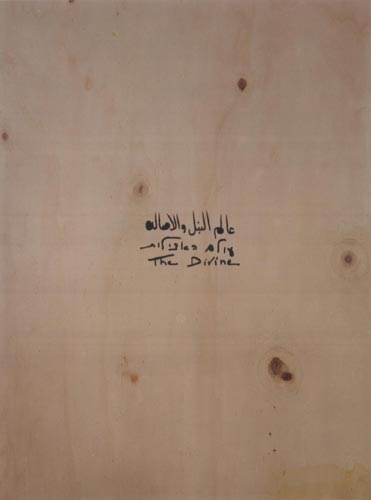
The World of the Divine
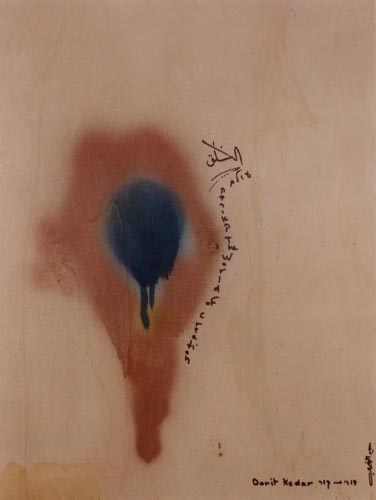
The World of Creation
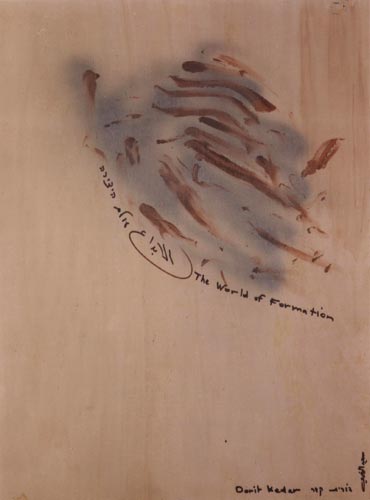
The World of Formation
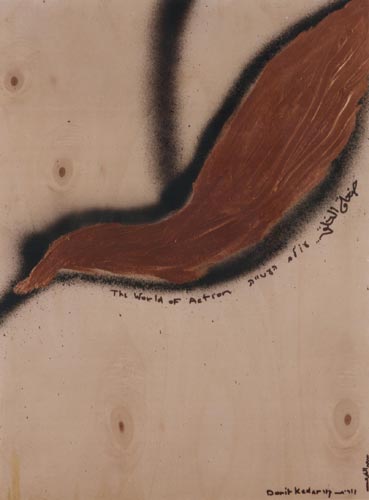
The World of Action
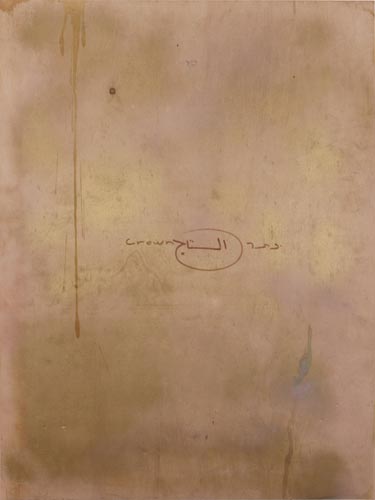
The World of the Divine
Keter
Crown is Oneness, Infinity, Wholeness, All Including, The one reflected in the many and Pluralism conceived as The One.
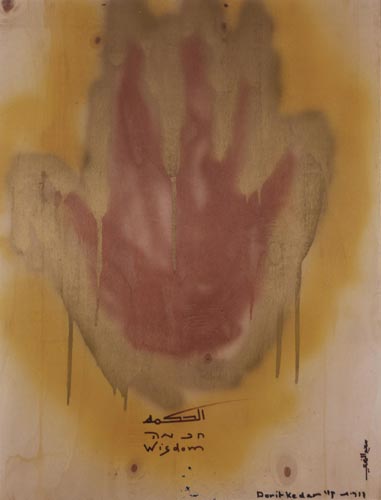
The World of Creation
Chochma
Active power, initiative, expansion, the male.
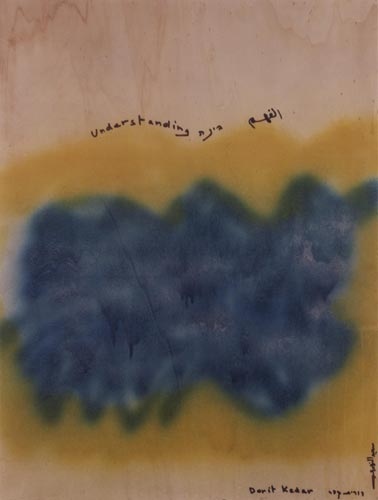
Understanding
Passive power, absorption, introversion, the female.
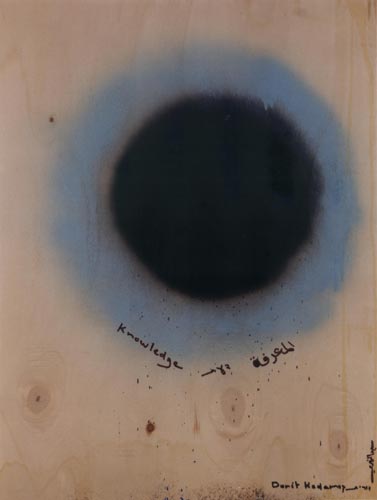
Knowledge (Da’at)
The formless and soundless curtain separating the World of Creation from the World of Formation.
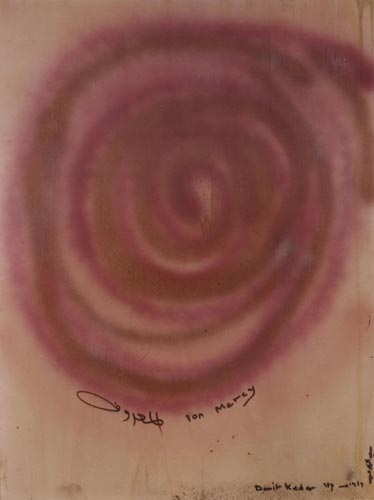
The World of Formation
Mercy (Chesed)
Primordial space - Chaos made into concrete form within matter.
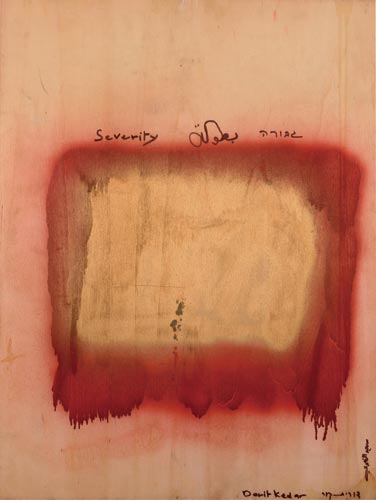
Strength (Gevura)
Primordial time - Chaos retains its essence by the transitoriness of all living beings.
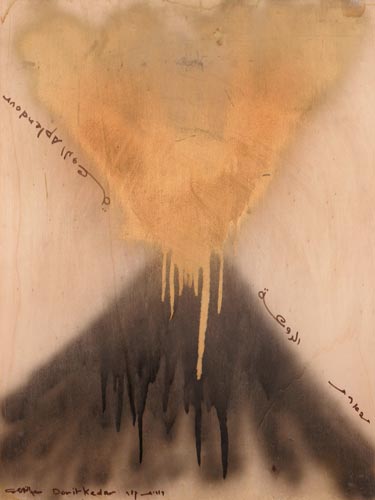
Beauty (Tipheret)
The Merging of Matter and Spirit
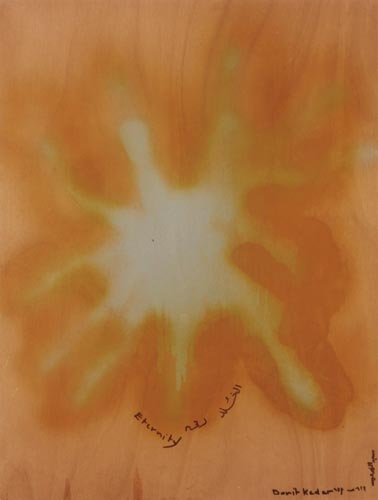
Eternity (Nezach)
The One Eternal Indivisible Soul.
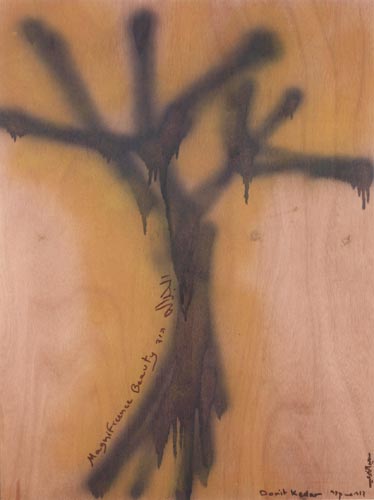
Splendor (Hod)
Infinite number of apparently finite transient bodies.
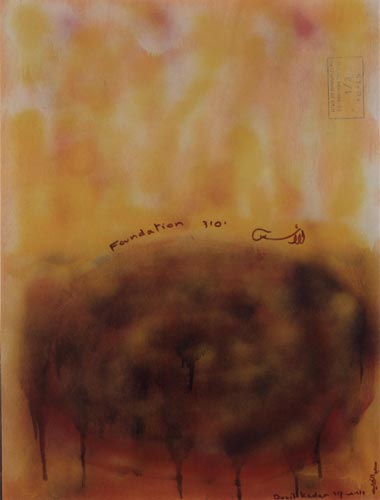
Foundation (Yesod)
The passage from the World of Formation to the World of Action, The Invisible Spirit metamorphoses into visible matter.
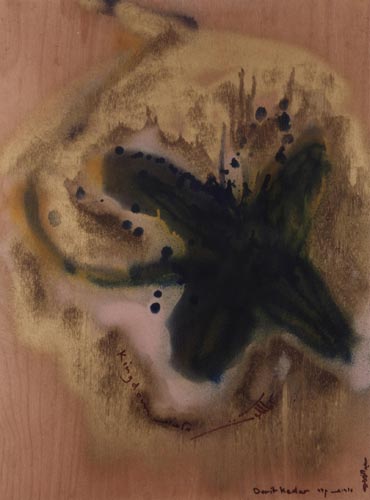
The World of Action
Kingdom (Malchut)
The Kingdom, the World of Phenomena, pluralism reflecting The One Source.
~*~*~*~*~
by Francis of Assisi (1181-1226), Italian
Most high, omnipotent, good Lord,
Praise, glory and honor and benediction all are thine.
To thee alone do they belong, most High, and there is no man fit to mention thee.
Praise be to thee, my Lord, with all thy creatures,
Especially to my worshipful brother sun,
The which lights up the day, and through him dost thou brightness give;
And beautiful is he and radiant with splendor great;
Of thee, most High, signification gives.
Praised be my Lord, for sister moon and for the stars,
In heaven thou hast formed them clear and precious and fair.
Praised be my Lord for brother wind
And for the air and clouds and fair and every kind of weather,
By the which thou givest to thy creatures nourishment.
Praised be my Lord for sister water,
The which is greatly helpful and humble and precious and pure.
Praised be my Lord for brother fire,
By the which thou lightest up the dark.
And fair is he and gay and mighty and strong.
Praised be my Lord for our sister, mother earth,
The which sustains and keeps us
And brings forth diverse fruits with grass and flowers bright.
Praised be my Lord for those who for thy love forgive
And weakness bear and tribulation.
Blessed those who shall in peace endure,
For by thee, most High, shall they be crowned.
Praised be my Lord for our sister, the bodily death,
From the which no living man can flee.
Woe to them who die in mortal sin;
Blessed those who shall find themselves in thy most holy will,
For the second death shall do them no ill.
Praise ye and bless ye my Lord, and give him thanks,
And be subject unto him with great humility
Christianity concretizes the inherent link between the Sphere of Crown and the Sphere of Kingdom through the Sphere of Splendor:
God, the Father (Crown) is incarnated in the Son, Jesus Christ (Kingdom) via The Holy Spirit (Splendor).
Christ the Divine Son descends to the world of matter as Man. Though He is born and dies, as all humans, his birth is triggered by the Holy Spirit and death becomes just a phase before resurrection.
His birth is not caused by transient human semen and his death does not prevent Him from reappearing again on earth.
The Eternal Infinite, The Son incarnated in the transient and The Holy Spirit become the Trinity, in which The Eternal, Transience and the Interlinking are all One Essence.
The Christian series is inspired by the Spirit of St Francis of Assisi, whose life can serve as the ultimate paradigm of a person being as one and at the same time, in body/soul/mind/spirit part of Creation and of The Creator.
The metaphoric motifs chosen to illustrate St. Francis personality and Faith are the butterfly, the rose, the shell and the caduceus.
Four motifs signifying the four directions of the Cross, while each direction has three types of the same motif to suggest the Holy Trinity.
The short life of the butterfly or the moth is the reason why this insect serves to represent the transience of the body. The moth gnawing the garments suggests the need to purify our soul so that it remains clean and the third butterfly, painted with black and red symbolizes Salvation attained by apprehending the incarnation of Spirit in flesh and blood.
The rose here chosen as the visual equivalent for the soul and feelings, is also an attribute of The Virgin Mary.
Mary is a pure vessel for the fruit that she bears in her body is – Divine (the white rose), she is prepared to sacrifice the most beloved Son for the sake of humanity (the red rose) and after death she becomes The Heavenly Mother and unites with Her Son (Blue rose).
The mind and mental abilities are symbolized by the Shell.
The Shell denotes the mental aptitude of Christ. He is incarnated in flesh and blood to teach by means of His own passion, the common source of all creatures, and the search of the Spirit in matter by the Holy Communion.
The four shells denote the fecundity of the mind that cultivates tolerance and thus becomes an open Gate to all existent – man, animal and Nature as a Wholeness.
Finally the Caduceus, Hermes mythological winged staff, refers to the exercises the spirit has to accomplish so as to live daily the presence of Infinity in the finite – practicing moral equilibrium by the maintenance of ethic criteria, wise and lofty thoughts so that body, feelings, mental abilities and spirit emit one harmonious and inseparable sound, as the old Japanese Zen Koan challenges – hearing the clapping of one single hand.
"Wherefore receive one another, as Christ also hath received you unto the honor of God." (Romans 15:7 – New Testament)
"He that saith he is in the light, and hateth his brother, is in darkness even until now." (1 John 2 9-11 – New Testament)
"Wherefore it behoved him in all things to be made like unto his brethren, that he might become a merciful and faithful priest before God, that he might be a propitiation for the sins of the people." (Hebrews 2:17)
The Spirit of St. Francis of Assisi is exemplified by representations of four aspects: the Physical, the Emotional, the Mental and the Spiritual
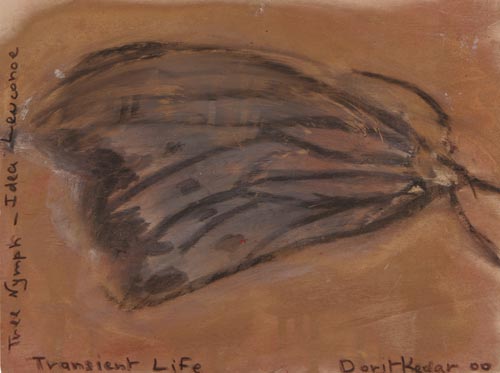
Symbolized by the butterfly, standing for Transient Life
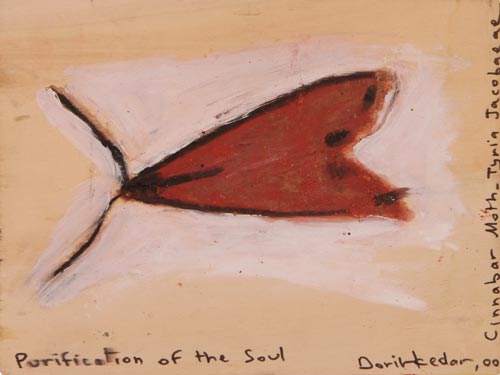
Purification
The need to purify the soul
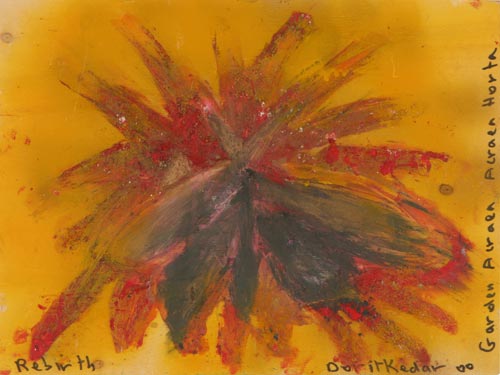
Rebirth
Attaining salvation by apprehending the incarnation of Spirit in flesh and bone.
Symbolized by the rose as attribute of the Virgin Mary, reflecting:
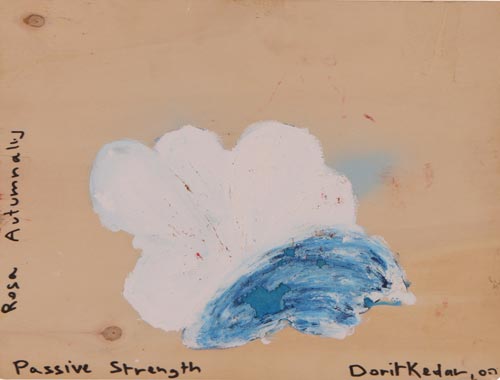
Passive Strength
The White Rose - The continuous cleansing of body and soul.
Self Observation as means to achieve objective observation of the World.
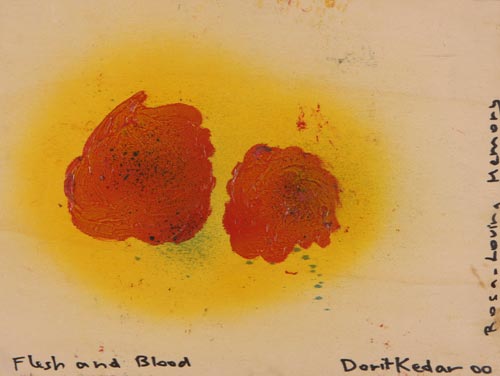
Flesh and Blood
The Red Rose - Transcending the ego by Sacrifice.
The Mother of Christ gives up her Son for Salvation of Humanity.
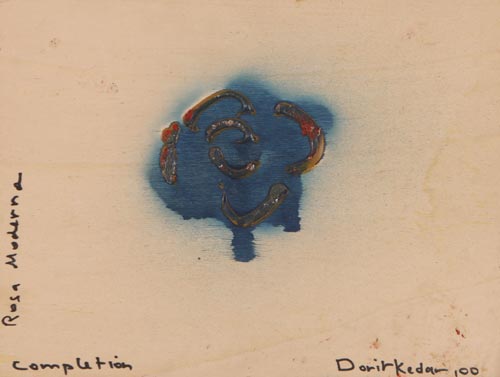
Completion
The blue Rose - The union of the Physical and the Spiritual.
Represented by the shell reminding us:
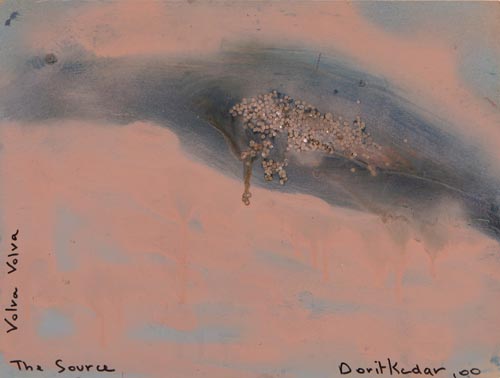
The Source
The Common Source of all creatures.
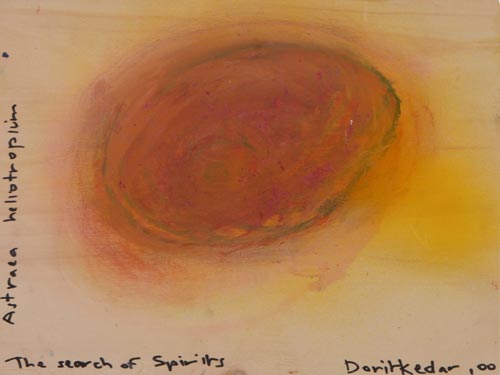
The Search of Spirit
The search of the Spiritual in matter.
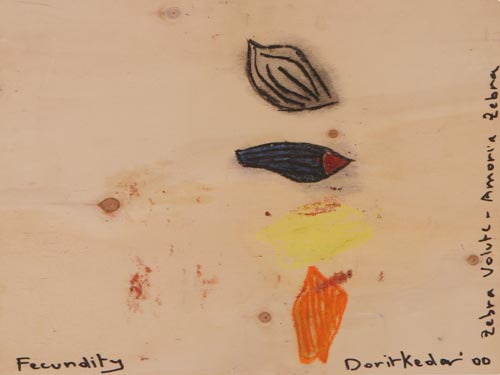
Fecundity
Fecundity as inner richness, embracing love, tolerance and acceptance.
The Souls becomes an open Gate to the all existent.
Symbolized by the caduceus, traditionally interpreted as:
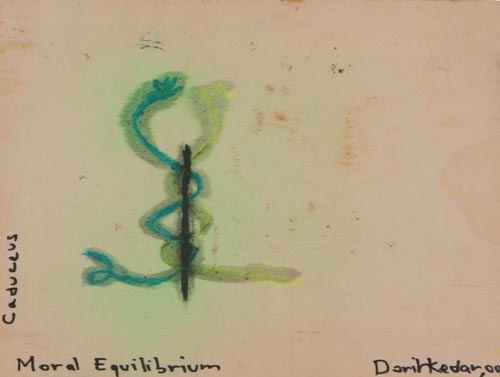
Moral Equilibrium
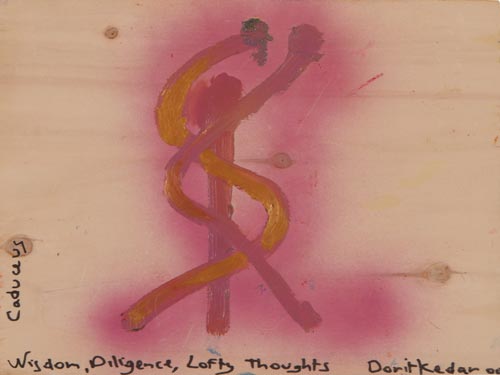
Wisdom, Diligence, Lofty Thoughts
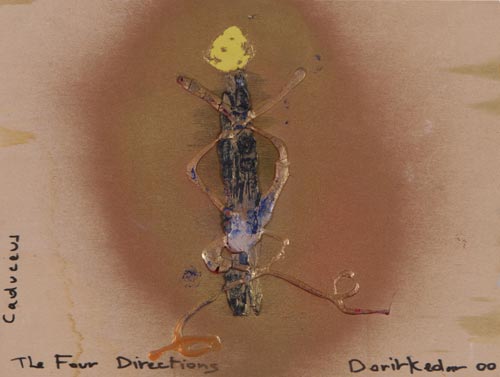
The Four Directions
The Four Directions of the Cross, the Four Elements, the Four Aspects (the Physical, the Emotional, the Mental and the Spiritual).
~*~*~*~*~
The series of Islam, "The Flowers of Sufism," is inspired by quotations from the Koran on tolerance, a subject which is one of the main pillars of Sufism. "Tolerance" may be a word very often used in theory but in order to be fulfilled in the practice of daily routine, we have to be free of prejudice or idiosyncratic preferences. In order to be released of an a priori state of mind, we are required to go through a drastic emotional transformation, aiming to enhance self-observation when observing the world. The peak of attainment is to always maintain the purity of Heart. Tolerance is not necessarily the means to search for the common characteristics or the reflection of oneself in the others; rather it denotes the aptitude to be all including.
Instead of cultivating the instinct of competition and survival, tolerance teaches to share and therefore to Be. Instead of avoiding or annihilating the outsider, tolerance opts for pluralism, sensing that everything is inter-linked and separateness is illusive. Due to the virtue of all-inclusiveness, tolerance assists the spirit in apprehending the most precious of Secrets – Being, meaning the exploration of infinite alternatives, mirroring Infinity or The Divine. Quotations of the Koran Suras, here presented, demonstrate the benefits of tolerance exercised towards other faiths, nature, the enemy, fellow man, women and orphans.
Arab Calligraphy: Said El-Nahari, Sahnin, Galilee
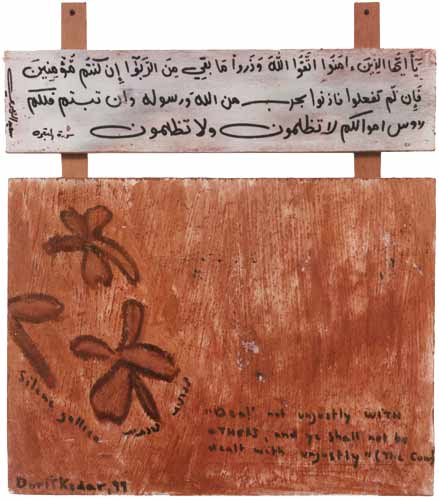
"Deal not unjustly with others, and ye shall not be dealt unjustly."
-The Cow, 279
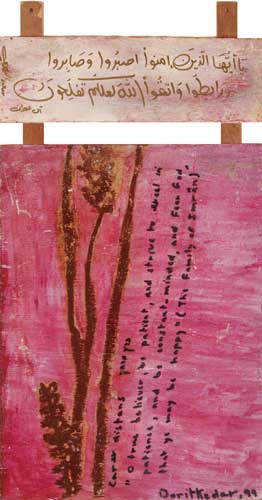
"O True believers, be patient, and strive to excel in patience, and be constant-minded, and fear God, that ye may be happy."
-The family of Imran, 200
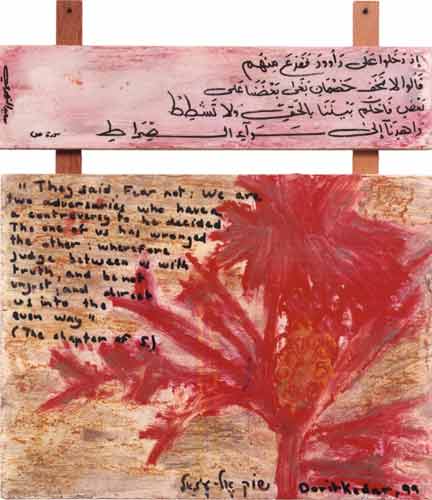
"They said, fear not; we are two adversaries who have a controversy to be decided. The one of us hath wronged the other; wherefore Judge between us with truth, and be not unjust; and direct us into the even way."
-The Chapter of S. 22
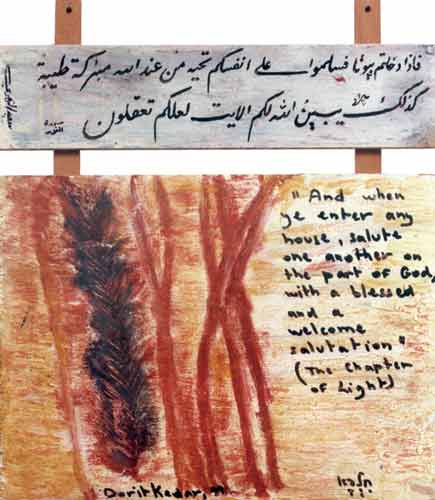
"And when ye enter any houses, salute one another on the part of God with a blessed and a welcome salutation."
-The Chapter of Light, 61
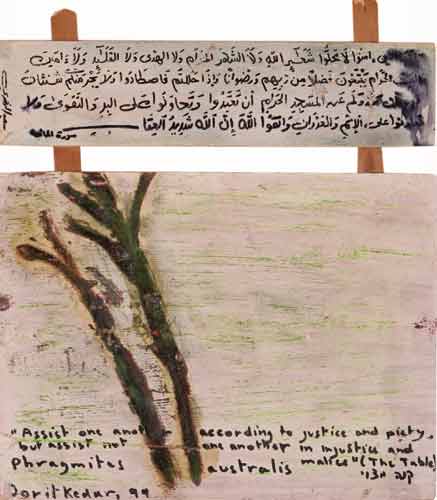
"Assist one another according to justice and piety, but assist not one another in injustice and malice."
-The Table, 2
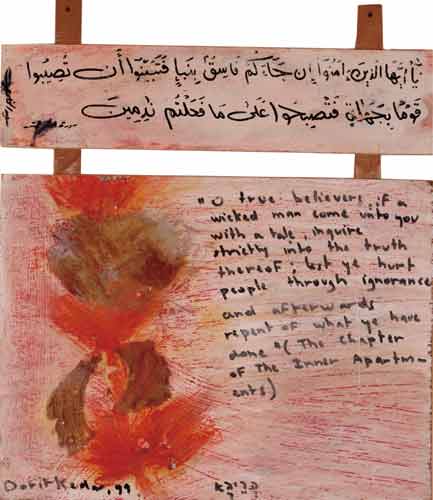
"O true believer, if a wicked man comes unto you with a tale, inquire strictly into the truth thereof; lest ye hurt people through ignorance, and afterwards repent of what you have done."
-The Chapter of the Inner-Apartments, 6
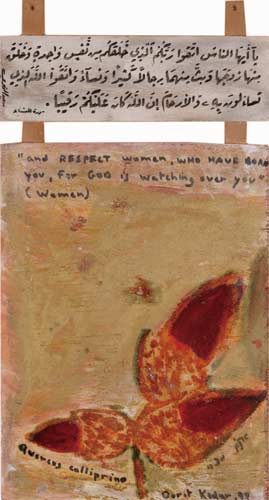
"And respect women, who have borne you, for God is watching over you."
-Women, 1
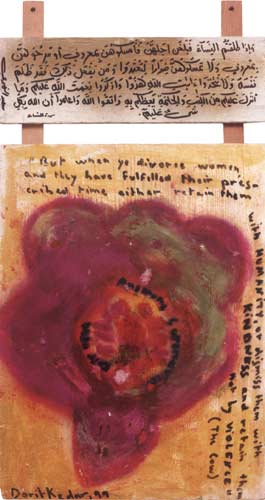
"But when ye divorce women, and they have fulfilled their prescribed time, either retain them with humanity, or dismiss them with kindness; and retain them not by violence, so that ye transgress for he who doth this, surely injureth his own soul."
-The Cow, 231
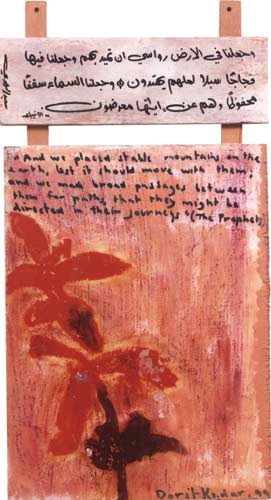
"And we placed stable mountains on the earth, lest it should move with them; and we made broad passage between them for paths, that they might be directed in their journeys; and we made the heaven a roof well supported."
-The Prophets, 31-33
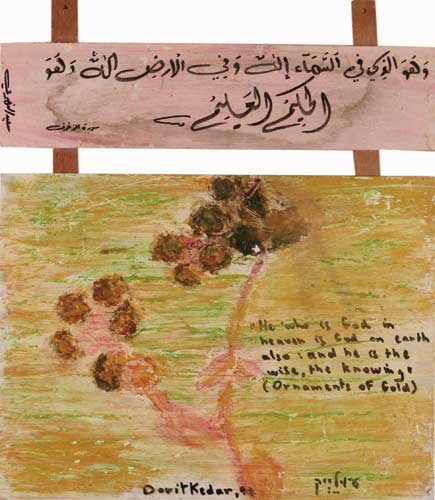
"He who is God in Heaven is God on earth also; and he is the wise, the knowing."
Ornaments of Gold, 84
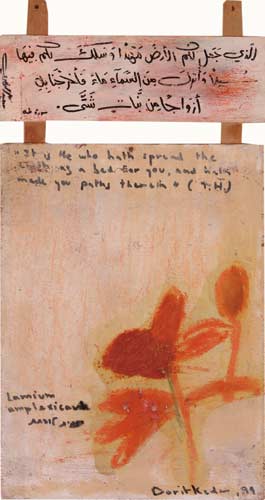
"It is he who hath spread the earth as a bed for you and hath made you paths therein."
-Ta Ha, 53
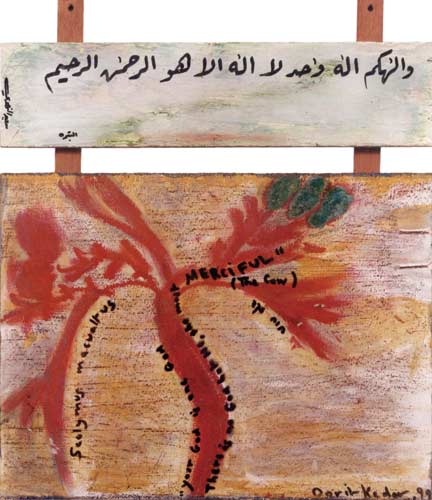
"Your God is one God. There is no God but He, the most merciful."
-The Cow, 163

"And fight for the religion of God against those who fight against you, but transgress not by attacking them first, for God loveth not the transgressors."
-The Cow, 190
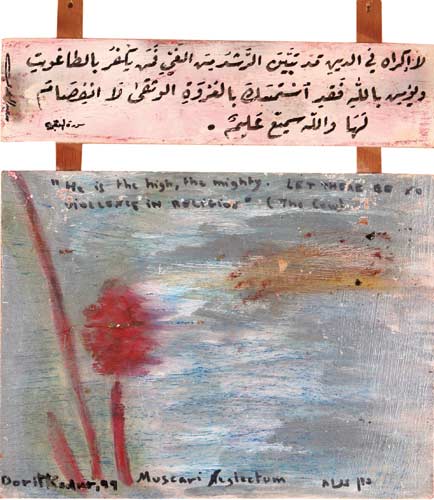
"He is the High, the Mighty. Let there be no violence in religion."
-The Cow, 255-256
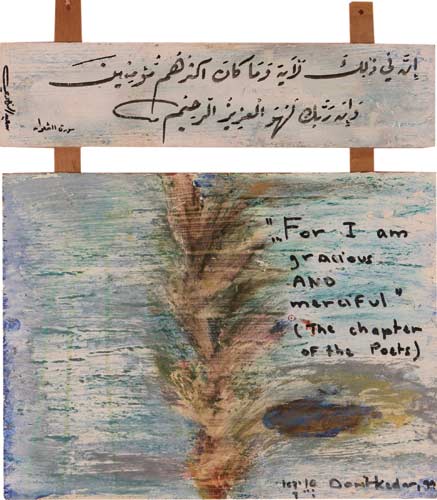
"…For I am gracious and merciful."
-The Poets, 122
~*~*~*~*~
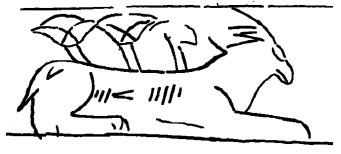
Ivory comb with ornaments:
Tartesic ivory comb engraved with animal motives: goats or other resting herbivorous animals. c. 8th century BC, Metropolitan Museum, New York.
This series exemplifies, in word and image, the phases to attain tolerance by liberation of idiosyncratic concepts. It is inspired by Zen insights and ancient esoteric imagery and symbolism of Tarot card wisdom.
One of the issues Zen Buddhism deals with is how to diminish the gap between elusive psychological space/time notion of reality and the real experience of Reality beyond time and space. Ideas and concepts tend to be static while the world is an infinite flux of transient phenomena. Forcefully the more dynamic the mental and energetic characteristics of the seeker of True Reality are, the better one can be part of the flux.
Attainment of Enlightenment, according to Zen Buddhism, Chinese Taoism or Indian and Tibetan Tantric knowledge, consist of the complete integration of the psychological aspect within Reality. At this point there is no gap existing between the psychological entity and Being. The mind becomes a virtual mirror which does not retain any former pre-concepts, and thus is able to explore and experience transience (or Being) without personal interpretative screens. Thus, the mind is able to grasp what there actually is, rather than imagine the world according to expectations or anxiety.
Both expectations and anxiety are products of an idea fix, a direct cause of intolerance. Instead of learning how to be an integral part of Being, the mind insists in the illusory task of making the world fit its own false reality. By becoming one with Reality, as it is, we start living the Essence.
22 Zen meditations explore the complex path which will gradually erase the gap between the inner static reality and Reality as it is. Each painting stands for a virtual symbolic meditative tool to help in the practice of the ancient Zen insights to attain integration of the transient here and now.

The Journey
To live the day as a continuous revelation.
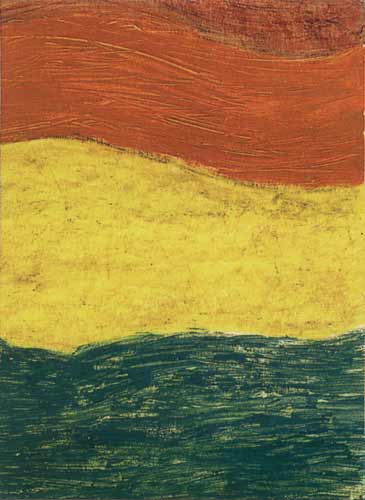
Tuning
Self-observation: attempting to tune body-emotions-thoughts and energy
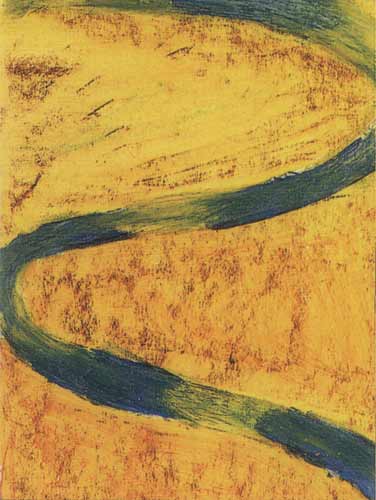
Overcoming Polarities
To mediate between the bright and dark aspects of our personality
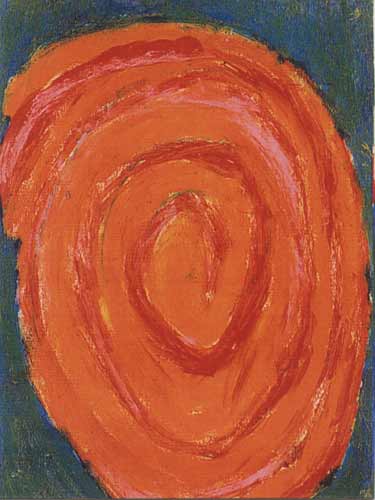
Enrichment
Deterring personal virtues and vices by exploring the infinity of the world
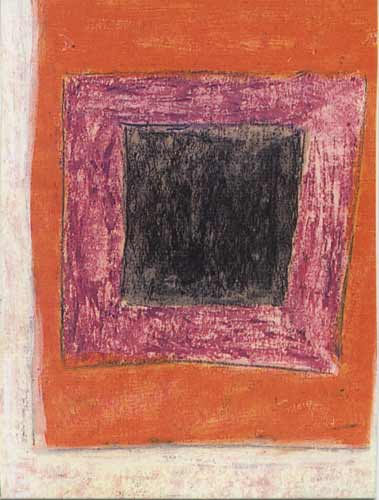
Focus
Perspective and Focus revised according to the circumstances
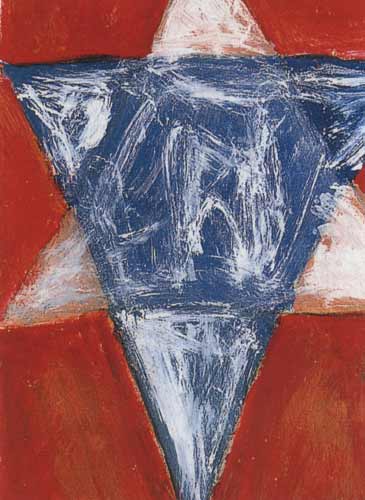
Balance
Perspective and Focus revised according to the circumstances

Choices
By cultivating passive activity and active passivity, choices multiply
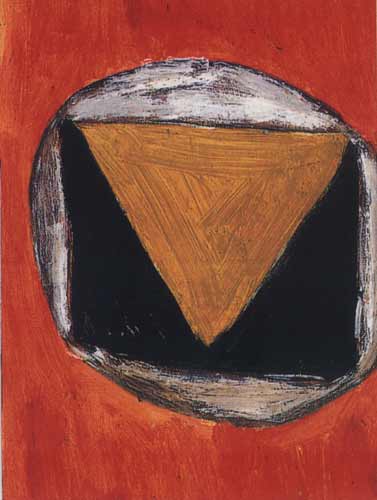
Expansion
The spectrum of life is amplified by creating potential choices
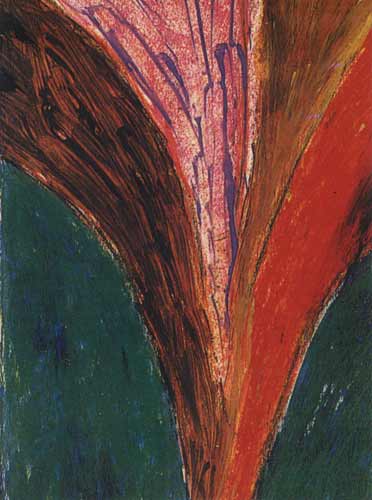
Welling Forth
Multiple choices provide the enduring strength to overcome obstacles
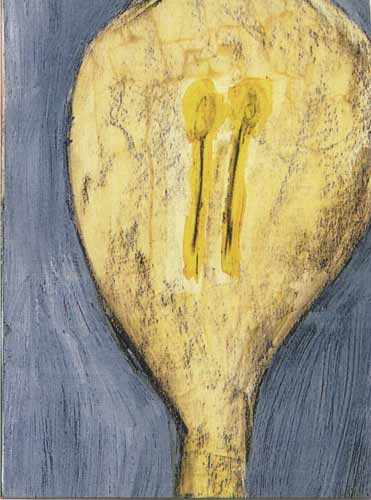
Aloneness
Failures and success along the path are bricks to build the inner temple
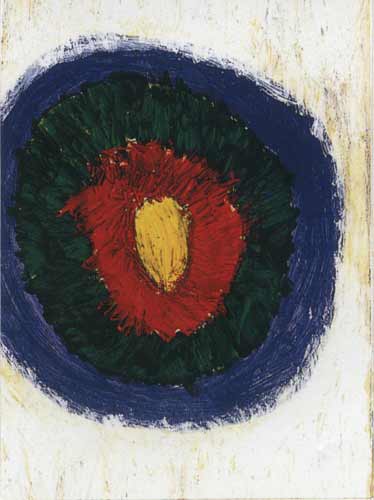
Adaptation
Maintaining inner tranquility in time of turmoil
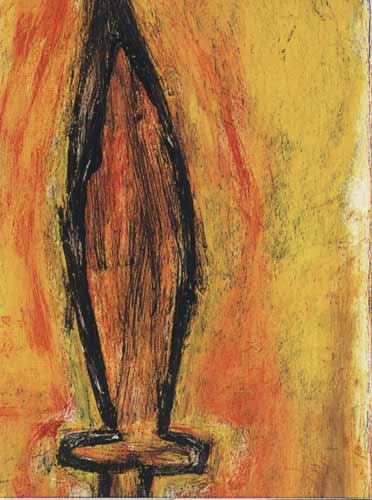
Decisiveness
The inner sword transforming the instinct of life, emotional and mental intelligence into an action of a saying which enhance the understanding of Infinity
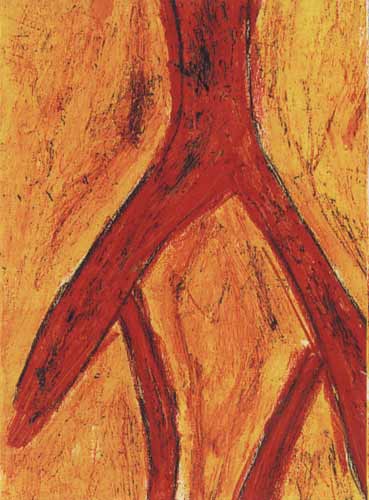
The Unknown
The Unknown becomes a facet of daily life when mental and emotional routine are suspended
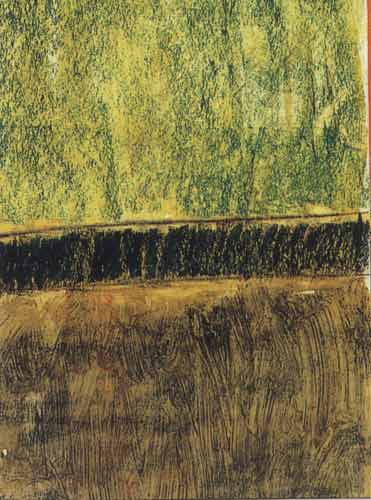
Parting
The creative mind finds alternative solutions to obstacles in the way and thus practices the awareness to the ultimate Change - Death

Flowing
Cultivation of softness and adaptability to flow in every possible situation
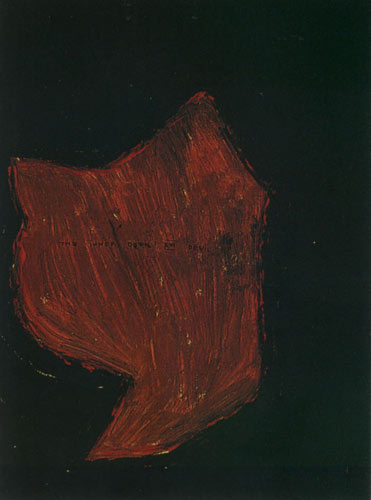
Survival
Inner strength is the safest refuge to recur to, when in stress!
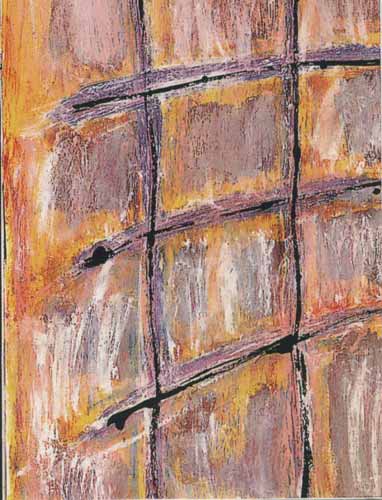
Yielding
Yielding to personal traumas or fantasy turns us prisoners of self-delusion
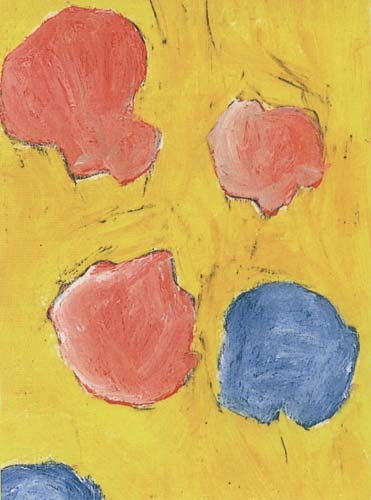
Calming Down
Sustaining calmness when being active ensures prolonged vitality
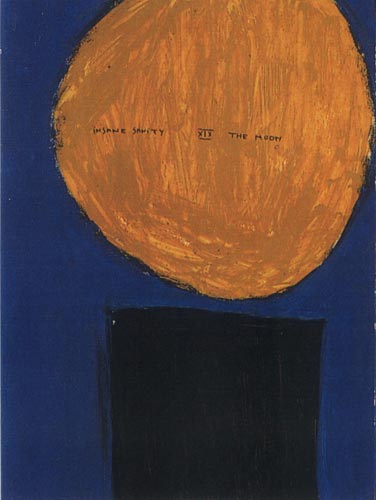
Willpower
Willpower should be recruited to accumulate productive knowledge
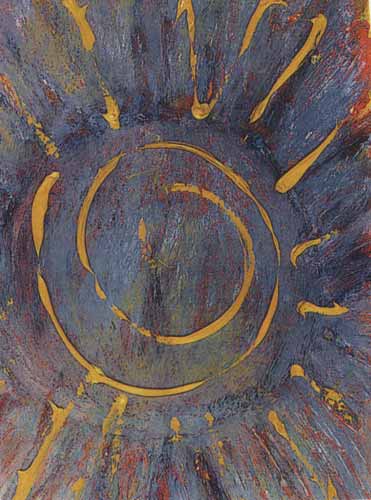
Sharing
Confidence and the feeling of belonging in early life may endue us with the spirit of giving and sharing when mature

Openness
Openness is a state of mind acquired by lifelong efforts and endurance
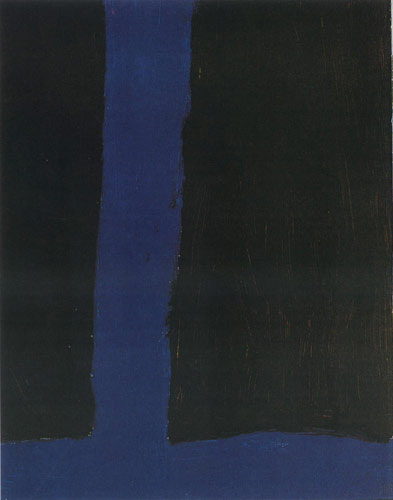
Oneness
If past failures have shed their wounding thorns becoming lessons to assimilate, we may mime a metaphoric tree in which root, trunk and foliage turn into Oneness
The Zen Masters'19 teachings were chosen to symbolize the enhancement of personal creativity, an essential aspect of Tolerance. Creativity forcefully triggers the will to find new paths, new revelations. The mind remains alert, curious, ready to discover anew everything that is there, rather than refusing to see and accept reality as it is in the name of an illusory theory.
"Nine years had passed and he [Bodhidharma] now wished to return westward to India. He called his disciples and said: "The time has now come. Why does not each of you say what you have attained?"
The disciple Tao-fu replied: "As I see it, [the truth] neither adheres to words or letters nor is it separate from them. Yet it functions as the Way." The Master said: "You have attained my skin".
Then a nun, Tsung-chih, spoke: "As I understand it, [the truth] is like the auspicious glimpse of the Buddha land of Akssobhya; it is seen once, but not a second time." The Master replied: "You have attained my flesh."
Tao-yu said: "The four great elements are originally empty; the five skandhas (aggregates) have no existence. According to my belief, there is no Dharma to be grasped." To him the Master replied: "You have attained my bones."
Finally, there was Hi-k'e. He bowed respectfully and stood silent.
The Master said: "You have attained my marrow."
Dumoulin, H., Zen Enlightenment: Origins and Meaning, New York and Tokyo, Weatherhill, 1984.
Inner silence, formless, soundless, chaotic to enable Creation
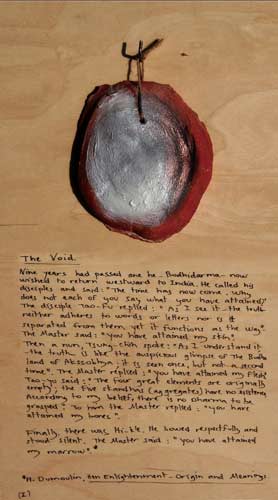
"The first step along this road had already been taken. It had led to a loosening of the body, without which the bow cannot be properly drawn. If the shot is to be loosed right, the physical loosening must now be continued in a mental and spiritual loosening, so as to make the mind not only agile, but free; agile because of its freedom, and the free because of its original agility; and the original agility is essentially different from everything that is usually understood by mental agility. Thus between these two states of bodily relaxedness on the one hand and spiritual freedom on the other there is a difference of level which cannot be overcome by breath-control alone, but only by withdrawing from all attachments whatsoever, by becoming utterly egoless: so that the soul, sunk within itself, stands in the plentitude of its nameless origin."
Herrigel, E., Zen in the Art of Archery, New York, 1981, p. 35.
Devoid of planning, stress or marking targets.
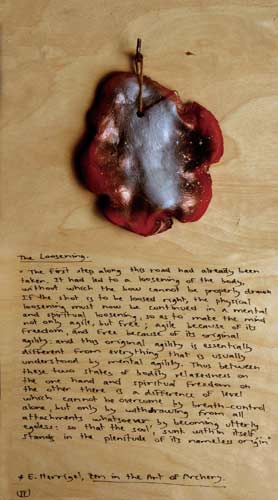
"When Lin-chi went to take his leave of the Master, Huang Po said: "There is no need to travel far. Just go to Master Ta Yu. He will teach you what it meant."
So Lin-chi went to Ta Yu's monastery and with great hope told him all that had happened. Ta Yu said: "Why, Huang Po was as kind to you as your own grandmother. Why have you come here, asking me about your faults?"
At these words, enlightenment burst upon Lin-chi and suddenly he felt as though his eyes were fully open. Up till then he had always thought of Buddhism as a powerful teaching separate from himself. Now he saw that is was only an idea in his mind."
Bancroft, A., Zen Direct Pointing to Reality, Thames & Hudson, Lancashire, 1979, p. 17.
Awareness to alternatives.
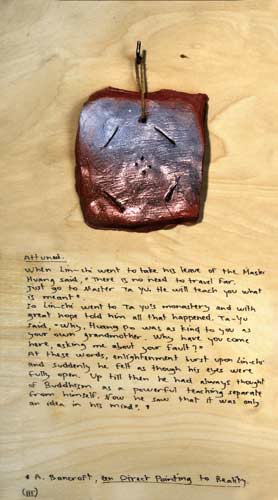
"Which is dearer
Name or life?
Which means more,
Life or wealth?
Which is worse
Gain or loss?
The stronger the attachments,
The greater the cost.
The more that is hoarded,
The deeper the loss.
Know what is enough;
Be without disgrace.
Know when to stop;
Be without danger.
In this way one lasts for a very long time."
Lao Tzu, The Tao of Power (a new translation of the Tao Te Ching by Wing, R., L.), Northampshire, Aquarian, 1986, p. 44.
Maximal Experience in minimal expression.

"I like to wash,
By way of experiment,
The dust of this world
In the droplets of dew.
The weedy grass called reminiscence
Reminiscent of the bygone days
In front of the Mausoleum."
Basho, M., The Narrow Road to the Deep North and Other Travel Sketches, trans. and intro. Yuasa, N., London, Penguin, 1966, pp. 56-57.
Simplicity as the optimal vehicle for Plenitude.
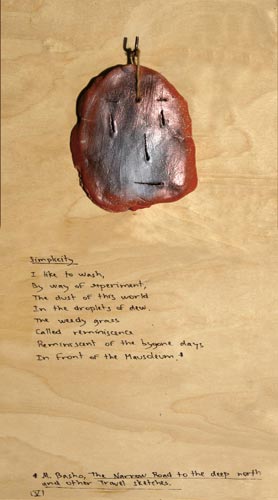
"Turn the head of your horse
Sideways across the field,
To let me hear
The cry of a cukoo."
Basho, op. cit., p. 105.
Adopting a non-hierarchical way to be all including.
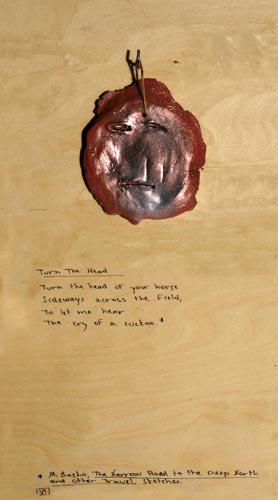
"After I had served him […] for the space of three years, my mind did not venture to reflect on right and wrong, my lips did not venture to speak of profit and loss. Then, for the first time, my Master bestowed one glance upon me – and that was all.
At the end of five years a change had taken place; my mind was reflecting on right and wrong and my lips were speaking of profit and loss. Then, for the first time, my Master relaxed his countenance and smiled.
At the end of seven years, there was another change. I let my mind reflect on what I would, but it no longer occupied itself with right and wrong. I let my lips utter whatsoever they pleased, but they no longer spoke of profit and loss. Then, at last, my Master led me in to sit on the mat beside me.
At the end of nine years, my mind gave free rein to its reflections, my mouth free passage to its speech. Of right and wrong, profit and loss, I had no knowledge, either as touching myself or others […] internal and external were blended into unity.
After that there was no distinction between eye and ear, ear and nose, nose and mouth: all were the same. My mind was frozen; my body was in dissolution, my flesh and bones all melted together. I was wholly unconscious of what my body was resting on, or what was under my feet. I was borne this way and that on the wind, like dry chaff or leaves falling from a tree.
In fact, I knew not whether the wind was riding on me or I on the wind."
Watts, A., The Way of Zen, New York, Bintage, 1986 quotes Giles, L., Taoist Teaching, London, Murray, 1925, pp. 40-42.
Dissolution of fixations, prejudices or preconcepts.

"The Taoist perception of the real world differs essentially from our usual Western one. We tend to think, diagrammatically, of a world of separate things – some of them alive – arranged in an independent space. We take it for granted that these lumps of independent "things" cause each other, "act on" each other as they "move about" in empty space and pass through a series of static states of change […] change happens, as assume, by one "thing" turning into "something else." The way we experience and measure time is by dividing it up into countable moments, each of which is separate and, in an abstract way, identical to all others, however large or infinitely small we may choose to make them.
Taoism sees all this schematic, vulgar and absurd. It recognizes that, though fixed concepts referring to things and states can be extracted by human thought from the mobile reality, and can be useful, there is actually no way of reconstructing the mobility of the real by adding up fixed concepts […] the Tao which Taoism knows, and with which its art is concerned, is a seamless web of unbroken movement and change, filled with undulations, waves, patterns of ripples and temporary "standing waves" like a river."
Rawson, P. and Legeza, I., L., Tao: The Chinese Philosophy of Time and Change, London, Thames & Hudson, 1984, pp. 9-10.
Instead of conceiving Reality as the agglomeration of separate things
– finding the infinite interlinking among all things.
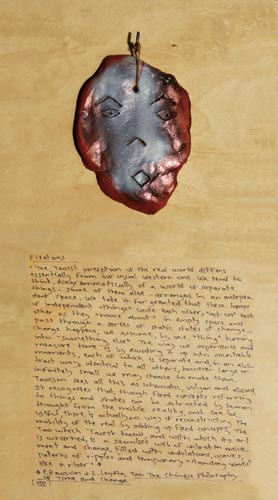
"In whatever you do, if you leave a sense of incompleteness, then Creation cannot resent you, ghosts and spirits cannot harm you.
If you insist on fulfillment in your work and perfection in achievement, you will become inwardly deranged or outwardly unsettled."
"Be pure yet tolerant, benevolent yet decisive, observant yet not intrusive, straightforward yet not stiff. As it said, the best candy is not too sweet; the best seafood is not too salty."
Daoren, H., Back to the Beginning: Reflections on the Tao, trans. Cleary, T., Boston and London, Shambhala, 1950, p. 32.
Perfection is illusory in the Infinity of finite transient phenomena of being.
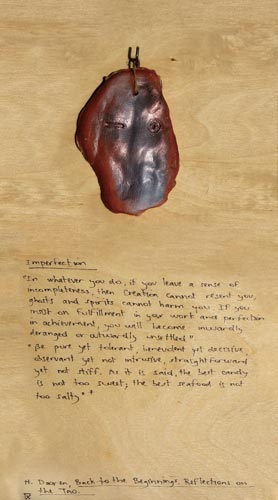
"Don't let the doubts of the crowd interfere with an individual view, but don't reject the words of others because of faith in your own opinion. Don't miss the larger reality by taking a little kindness personally; don't use public opinion to please yourself."
Daoren, op. cit., p. 52.
Grasping outer collective Reality as the source of constant enrichment while gradually developing the quality of Individuation.
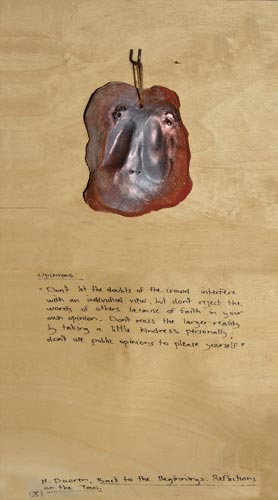
"The eye's normal field of vision is limited. But contemplative vision is of a particularly intense order, since it is directed towards the essence of form. This interdependence of form and that which generates form is seen to be the ultimate configuration, one that subsumes our world of phenomena, this normally nexus of overlapping patterns."
"The yogi artist's perception of form is grounded in his process of symbolization. The function of the symbol is unique for the yogi artist in that it operates as the link between observation of the outer world and a very precise extraction of its essence."
Mookerjee, A., Yoga Art, London, Thames & Hudson, 1975, p. 25.
The focused Mind is apt to absorb pluralism.
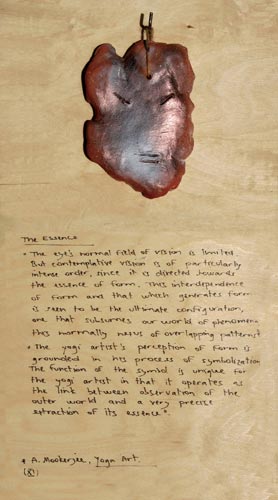
"Synchronizing mind and body is also connected with how we synchronize or connect with the world, how we work with the world altogether. This process has two stages, which we could call looking and seeing. We might also speak of listening and hearing, or touching and then feeling, but it is somewhat easier to explain this process of synchronization in terms of visual perception. Looking is your first projection, and if you have any doubt, then it might have a quality tremor or shakiness. You begin to look, and then you feel shaky or anxious because you don't trust your vision. So sometimes you want to close your eyes. You don't want to look any more. But the point is to look properly. See the colors: white, black, blue, yellow, red, green, purple. Look. This is your world, you can't just not look. There is no other world. This is your world; it is your feast. You inherited this; you inherited these eyeballs; you inherited this world of color. Look at the greatness of the whole thing. Look doesn't hesitate – look. Open your eyes. Don't blink, and look, look – look further.
Then you might SEE something, which is the second stage. The more you look, the more inquisitive you are, the more you are bound to see […] Synchronizing mind and body is looking and seeing directly beyond language."
Trungpa, C., Shambhala: The Sacred Path of the Warrior, Boston, Bantam, 1986.
The more one looks, the more one sees the ever transient here and now.

"After you have practiced for a while, you will realize that it is not possible to make rapid, extraordinary progress. Even though you try very hard, the progress you make is always little by little. It is not like going out in a shower in which you know when you get wet. In a fog, you do not know you are getting wet, but as you keep walking you get wet little by little. If your mind has ideas of progress, you may say, "Oh this pace is terrible" but actually it is not. When you get wet in a fog it is very difficult to dry yourself. So there is no need to worry about progress."
"If you continue this simple practice every day you will obtain a wonderful power. Before you attain it, it is something wonderful, but after you obtain it, it is nothing special. It is just you, yourself, nothing special."
Suzuki, S., Zen Mind, Beginner's Mind, New York and Tokyo, Weatherhill, 1982, pp. 46-47.
The Target is the Way and the way is the Target.
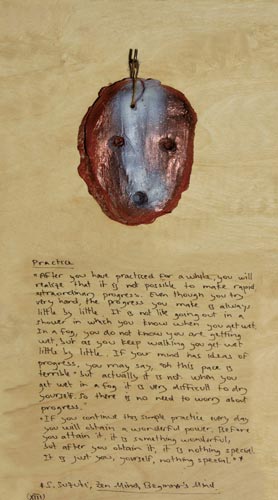
"Why are the plain, stout earthenware teapots used by farmers so full of charm, for instance? And offering in religious worship are embellished to make them more appealing in the way that exudes the vitality of folk life.
I also pondered the conceptual basis behind each form, from questions as weighty as the world view and the aesthetic consciousness they imply to subjects as out of the way as the hopes and dreams of the common people and the symbolic meaning of various folk customs […] Forms, in sum, are not merely visible exterior, and their structural principles are not entirely those of art and decoration. The aesthetic consciousness they reflect is often rooted in the wisdom and feelings of the people or possesses some other conceptual significance and this is what makes them worth discussing."
Po-Ho, C., Chinese Forms, trans. Eberly, P., Taipei, Sinorama Magazine, 1989.
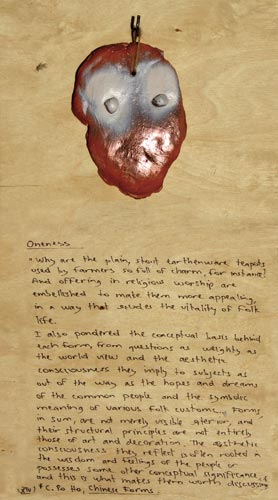
"Zen consists entirely of transcending or moving beyond all conventional ideas, concepts and words."
"Religion implies a faith in the beyond that is in another reality, philosophy – a faith in concepts and abstractions."
"The real you is just the things that your mind is aware of. Accordingly there is no distinction between knower and known in that you are precisely what you know or feel."
Radcliff, A. and Radcliff, B., Understanding Zen, Boston, Charles E. Tuttle, 1993, pp. 5, 13 and 47.
Keeping the mind, soul and spirit in movement to avoid delay between the knowing ability and the actual knowing of the world.

"When one tries to get at, it lies one thousand miles away. What can one do with it?"
"One thousand miles"
"What shall I do when the ancient frontier gate does not turn?" "Has it turned yet, or not?"
"No turning yet" "Better have it turned"
"The past is past, and the future is not yet here. The line is the absolute line of the Present, altogether timeless, as a spatial, geometrical line has no width. But, existentially speaking, the absolute "fifteenth day" is not empty and or lacks content; in it indeed are hoarded up all the past deeds or achievements already taking effect, and alas all the possibilities that are to materialize in time to come. How would the Zen Master give expression to this fact? He is not a dialectician, not a metaphysician; he is not used to subtleties of intellection. He is a most practical man, in the sense of a radical empiricist; he does not conceptualize.
Hence Ummon's utterance: "Every day is a fine day.""
Suzuki, D., T., Living by Zen, ed. Humphreys, C., London, Rider, 1986, pp. 84 and 57-8.
Every day is a fine day to be challenged by the ever unknown, which is Life.
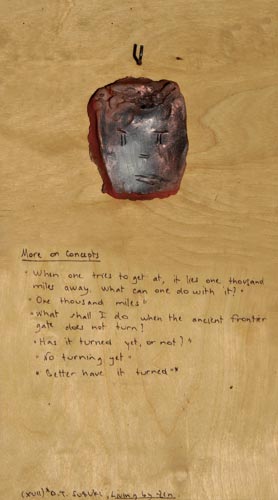
"Nous avons dit plus haut que nous n'avons pas besoin d'être présent à quelque chose ou de connaître quelque chose pour être, ni besoin d'être quelque chose pour connaître. Notre vraie nature est de connaître – connaître c'est être- et d'être, qui est connaître. C'est précisement la séparation illusoire de ces deux états – connaître et être – qui est à la racine de nos malheurs."
Low, A., Le rêve du papillon: une plongée au coeur du Zen, Montreal, Libre Expression, 1992, p. 156.
What we know is what we actually are. If knowledge is practiced as continuity– we live the actual. But if knowledge is based on past experience - we repeat an inner pattern, forcefully static and therefore - illusory.
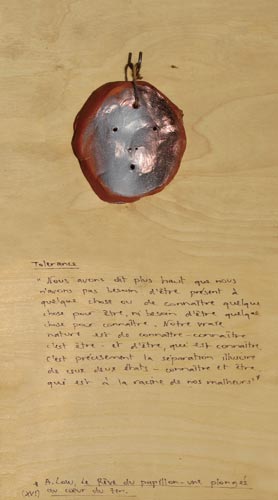
"A newcomer asked to be shown the way to the monastery, and Chaocho replied: "Have you finished eating your rice…? Then go wash your bowl." Thereupon the monk gained instant enlightenment.
A monk came from Ting-chou's assembly to Wu-chiu, who said to him, "What do you find in Ting-chou's teaching? Is there anything different from what you find here?"
The monk said, "Nothing different."
Wu-chiu said, "If there is nothing different, why don't you go back there?" and he hit him with his stick.
The monk said, "If your stick had eyes to see, you would not strike me like that."
Wu-chiu said, "Today I have come across a monk and he gave him more blows."
The monk went out. Wu-chiu called after him and said, "One may receive unfair blows."
The monk turned back and said, "To my regret the stick is in your hand."
Wu-chiu said, "If you need it I will let you have it."
The monk went up to Wu-chiu, seized his stick and gave him three blows with it.
Wu-chiu said, "Unfair blows unfair blows." The monk said, "One may receive them." Wu-chiu said, "I hit this one too casually." The monk made bows.
Wu-chiu said, "Monk, is that how you take leave?" The monk laughed aloud and went out.
Wu-chiu said, "That's it. That's it.""
Osho, M., S., This. This. A Thousand Times This: The Very Essence of Zen, Cologne, Rebel Publishing House, 1988, pp. 54-5.
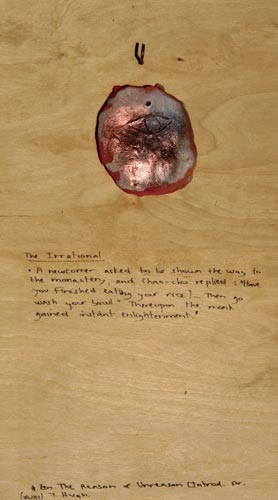
"Emptiness, silence, is not nothingness, but fullness, your fullness.
For the artist-priests who painted them, they represented acts of intense contemplation, attempts to comprehend the essential nature of the universe and to penetrate to the very core of individual existence.
The author's commentaries and the translated poems accompanying the paintings are designed to work at the nonverbal level, stimulating readers to similar "transactions with the universe.""
Holmes, S., W. and Horioka, C., Zen Art for Meditation, Vermont and Tokyo, Charles E. Tuttle, 1984, p. 1.
The past is remembrance, the future is fantasy. The present is the passage between remembrance and fantasy. If we live devoid of memory or fantasy- we experience Void. In other words: an awareness entirely detached, able to fully experience Transience.
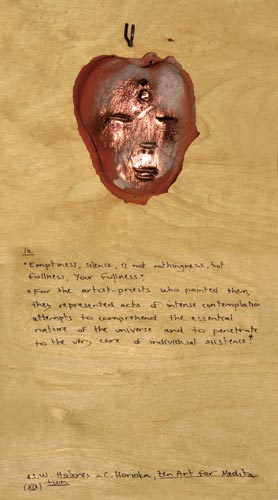
The closing series of Buddhism presents an imaginative Mandala, suggesting the intricate journey of The Book, hopefully leading towards a better understanding of inter-religious tolerance.
The first part, Chaotic Animals, Flowers, Death Mask, symbolizes chaos and mental death caused by stereotyping, fixations, prejudice and discrimination. A static state of mind cannot form part of the eternal dynamic flux of Life and Death cycle. Furthermore the attempt of the static mind to reduce all phenomena to an idea fix, paradoxically, brings forth chaos, tragedy and even premature death.
The second part, Vase with Breasts, Withered Flowers, Tantric Evil Masks, presents the by-products of the static inflexible mind such as anger, envy, avarice that results from the inability to give up personal desires, and refusing to adapt one's modus vivendi to the ever-changing waves of Life and Death.
The third part, Zen Insights, Vase and Ascetic Flowers, refers to Zen teachings which may increase creativity by improving the contemplation of the world and the cultivation of inner harmony, helping in deciding when to act and when not.
Chaotic Animals, Flowers, Death Mask
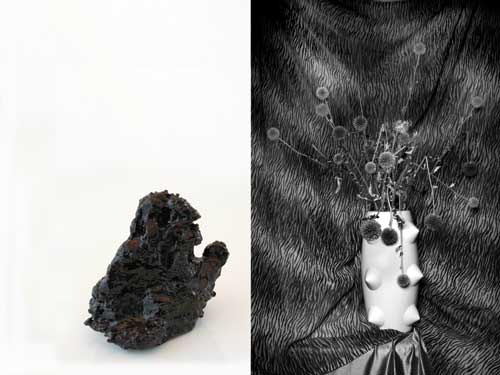
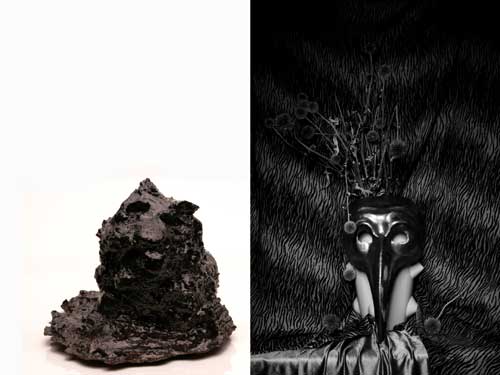
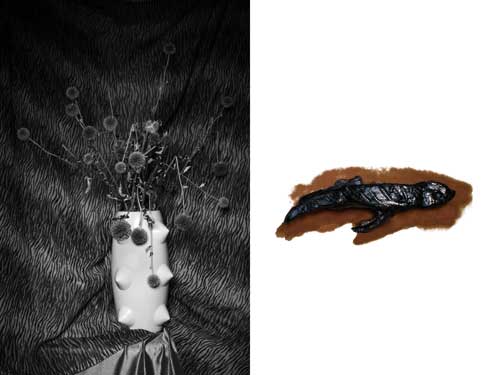
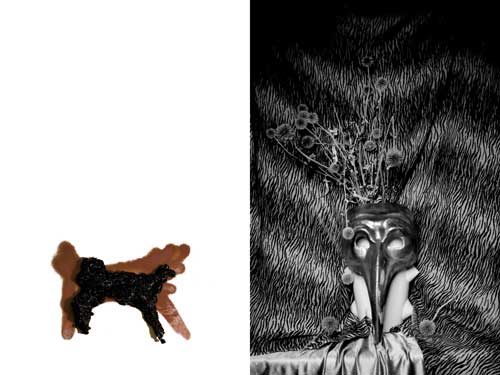
Vase with Breasts, Withered Flowers, Tantric Evil Masks
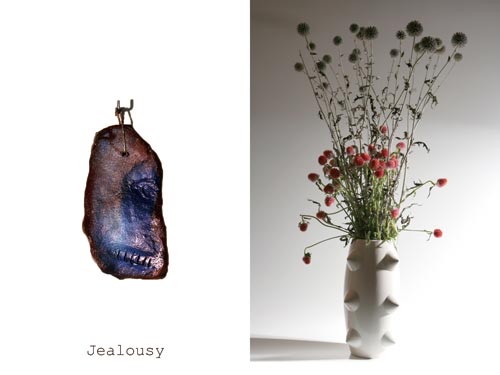
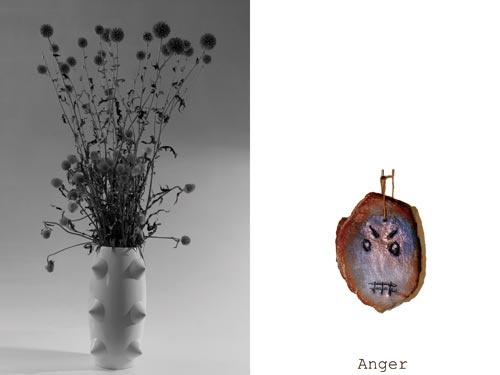
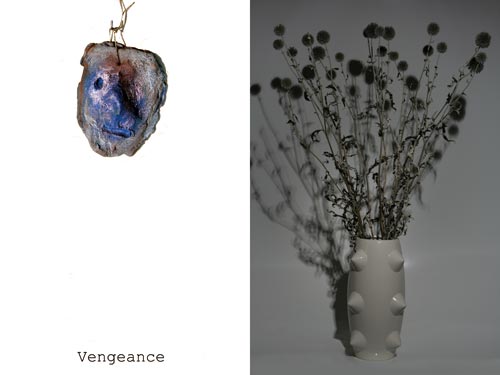
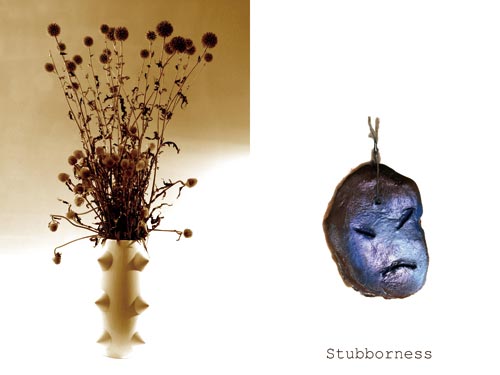
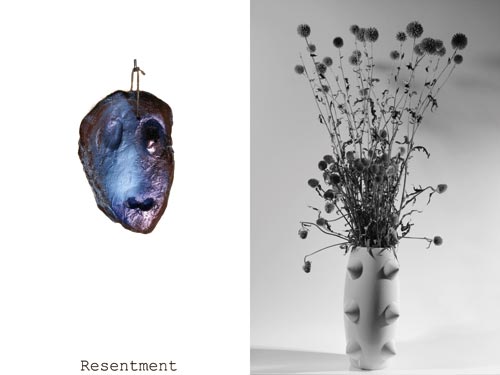
Zen Insights, Vase, Ascetic Flowers
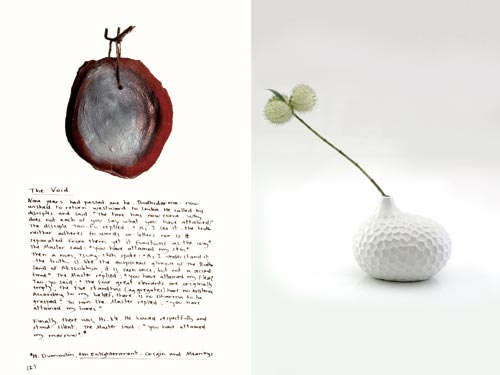
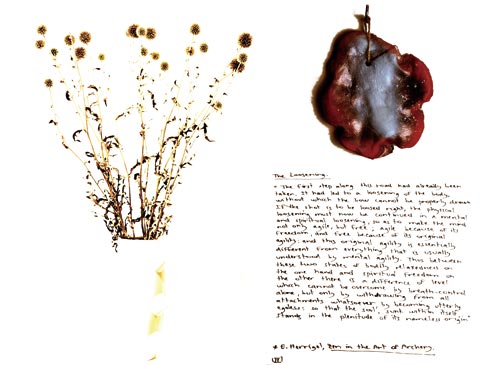
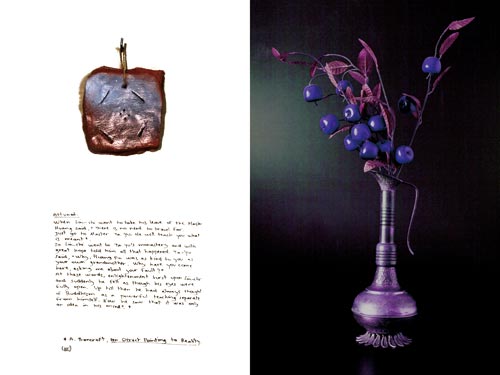

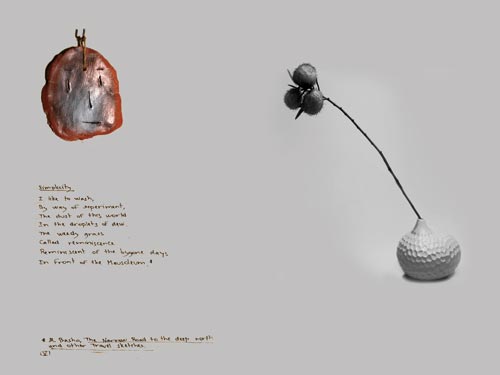

~*~*~*~*~
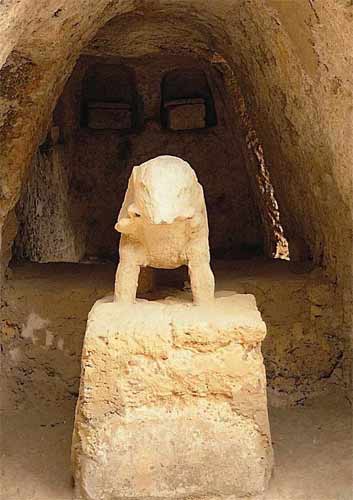
Sculpted in hill stone, h.: 0.57 cm., l.: 0.83 cm. Its shape recalls an African elephant. Was discovered in the so-called "Tomb of the Elephant" in Carmona's Roman necropolis, where it may be visited. The place is interpreted as a Sanctuary dedicated to Attis and Cibeles, where the elephant is a symbol of eternity and afterlife.
The mammals, birds and fish which dwell in this series are inspired by Nature and Myth. The four elements of the world are envisaged through the versatility, complexity and beauty of the creatures. Earth, water and air are populated by the infinite richness of bustling life. Fire or energy is here suggested by the continuous ebb and flow of the tides. The sharp senses, instinctive power, endurance and splendor of the animals' skin, fur, feather and fish scale – all serve as the concrete reminders of the Infinite ingenuity of the Great Creator.
The animal icons stands in tribal belief for a Nature Spirit, accompanying the human being throughout his life also functioning as a bridge between men and the Great Mystery (The Supreme), who knows the creatures' vast spectrum of dynamic languages.
Such a sumptuous knowledge is full of vitality because it has to consider the object of sight in a perpetually changing context within space and time. The iconography depends on both the activity of the particular animal and the scenery of that activity. Such an effort, on the part of the Shaman, accrues his focus, as well as, an amplified perspective. Thus, the Shaman cultivates the animal power, as the eyesight of the eagle, the swiftness of the falcon, the wakefulness of the savage cat...
By polishing the communication with the rich population of the creatures, the Shaman gradually increases his own senses and inner vision, establishing the inner gates leading to invisible, ample channels of Infinity...
The Ancestor tiger
Walks while standing
He has a frontal
Gaze
But sees the sides
Of things
Priest of the forests
Master in Life
Master in Death Like Eagle
Between
The Worlds
Of Red blooded
Background,
The guardian of
Corn and Milk
Watching the
Gates of
Underworld.
Preventing
Famine, illness
And bad luck
To come through.
The Ancestor in
Orange
Animal Vest
Is performing
The Rite of
Passage.
Here I am,
A boy of
Women
A boy of
Men
A boy of
A Woman
A Man of
Boys,
An Old One
Reuniting with
Big 'I'.
Father Moon
The Creator
The Virtuous
The Good One
Omen of
Fertility
Who will
Fight Evil
Spirit and
Win.
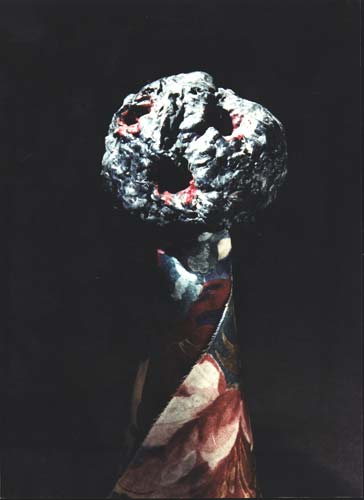
The Spirits of Earth - Stone
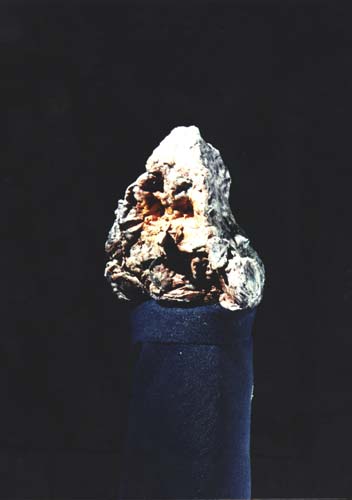
The Spirits of Earth – Volcano
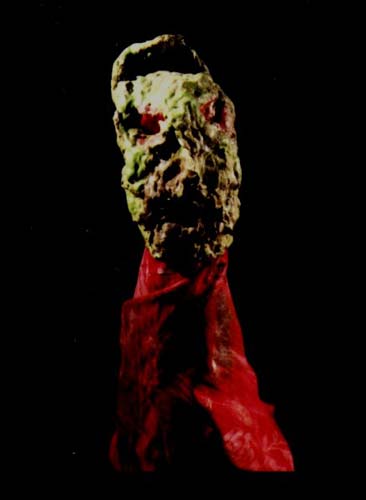
The Spirits of Earth – Mountain
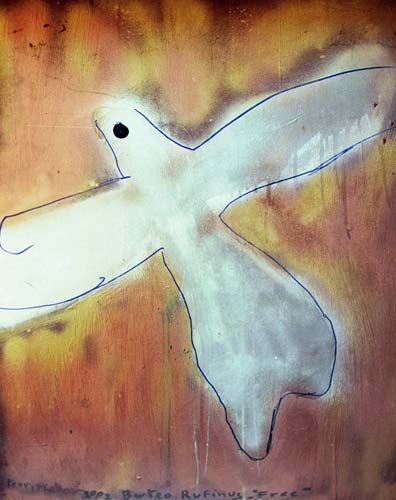
The Dove of Magic
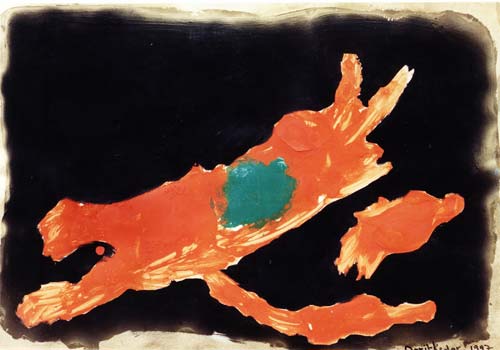
Fierce Animal
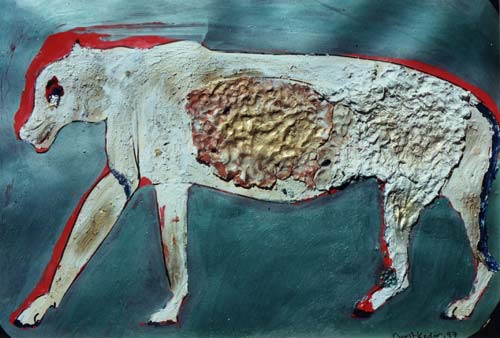
The Prince Tiger
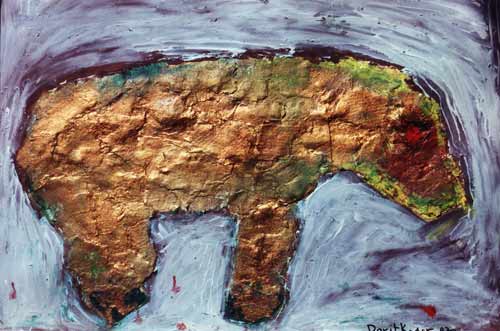
Anteater
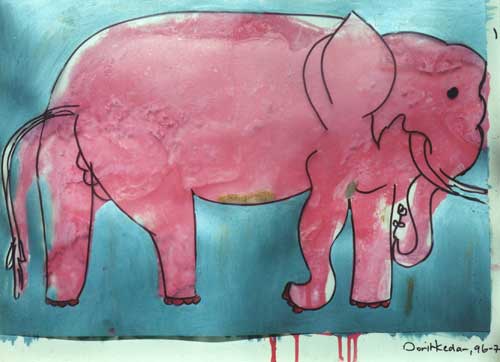
Elephant
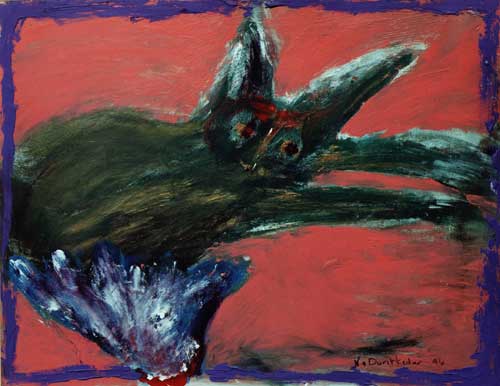
Cat and Flower
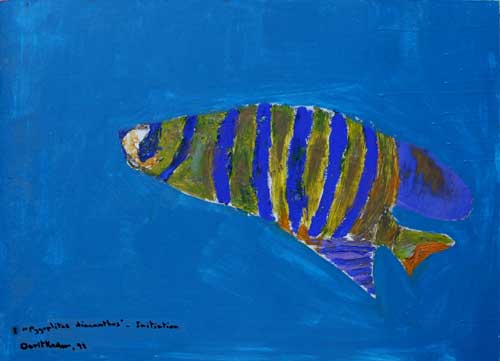
Initiation

The Flowing Movement
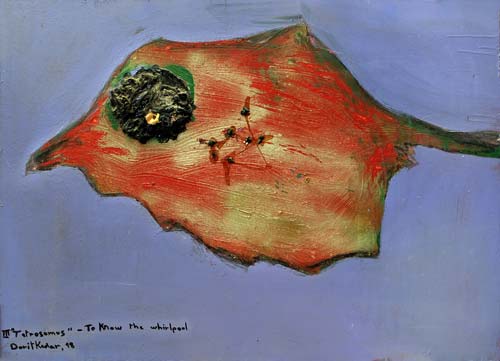
To Know the Whirlpool
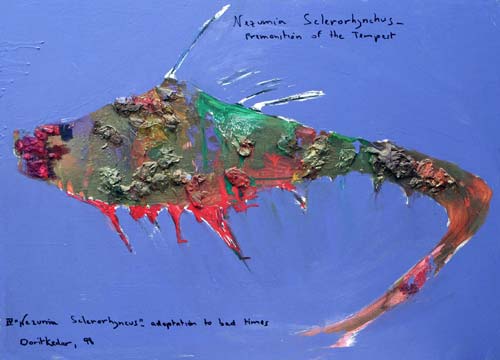
Adaptation to Bad Times
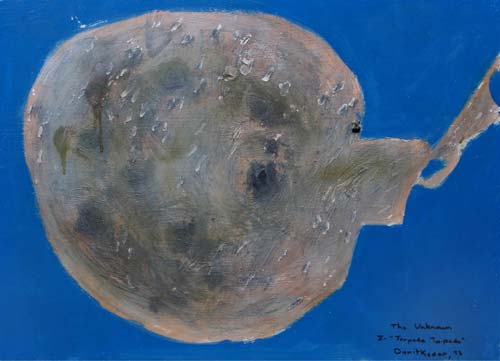
The Unknown
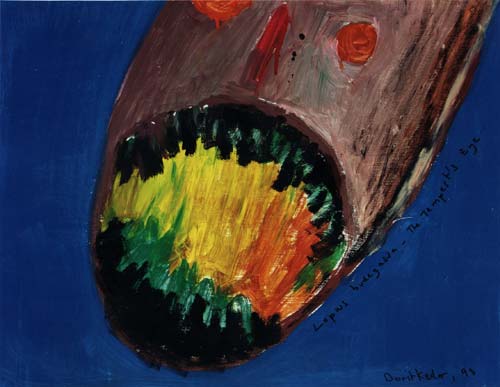
The Tempest Eye
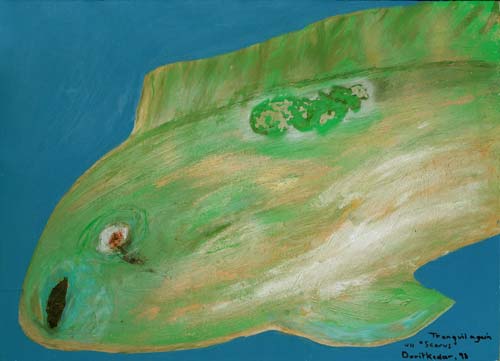
Tranquil Again
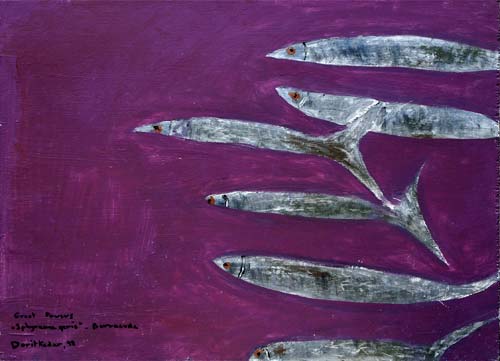
Great Powers
~*~*~*~*~

Set of four ivory engraved ladles, resembling the foot of a deer, a goat, a bovine or a griffin. Belongs to the Saltillo Ensemble and were found near the Saltillo Vases. c. 8th century BC. Carmona Municipal Museum.
Every painted shield of this series tries to draw the viewer's attention to the uniqueness of the animal depicted. Each creature has a different form, texture and color of body. Each responds to the general characteristics of its species, while being singularly special and unrepeatable in its individual form and sound. Animals have their own habitat and life style influencing their particular communication means. Animals or flora, pertaining to the same family, branch into numerous sub-species, all according to the ever-changing geographical context, dependent on space and time dynamics. The more one inquires into the secret life of beings, the more humble one feels when approaching the non-terminable spectrum of transient living phenomena.
The observer, conscious of the miracle of both transient and present phenomena, continuously learns to increase his ability to communicate with the species and sub-species, as well as the flora, for everything is full of the subtlety of Life manifestations. The more open minded the seer is, the more will he uncover the inner secrets of reality. The more experienced he gets in gathering nature's revelations, the more he increases the awareness of an invisible spiral of the endless living phenomena. We all are brothers and sisters of the human, the animal, flora, stones, metals, stars and galaxies. Our souls and spirits all form part of Infinity though bodily, we are here for a limited time.
The acknowledgement of the here and now, on the one hand, and the ineffable spectrum of changing phenomena on the other, may be the source of Humility and Awe as one begins to grasp the Great Mystery.
Nature is my temple,
Heaven is Earth.
The birds are my angels,
The Bushes – my friends.
All creatures are
Brothers and sisters.
Every phenomenon has
Its value and meaning.
We all are in the
Invisible hands of
Great Mystery
Great Spirit
To reunite with the
Omnipotent is to
Communicate with
Its infinite reflections
On Earth.
Therefore I pray to
You so that I
Remain always
Incomplete to learn
From the animals
Under
Ground and water,
On soil,
Through air.
To cultivate
Fox solitude
The vision of Frog,
Serpent renewal
Profundity of
The Dolphin,
Weasel improvisation
Perseverance of Goose,
Freedom and courage of Crows.
I will swim
Through the Ocean like Fish,
Survive as Insect
Turtle in
Four seasons.
I will clean,
Polish and
Perfect senses
To become Eagle in Heaven
And Earth.
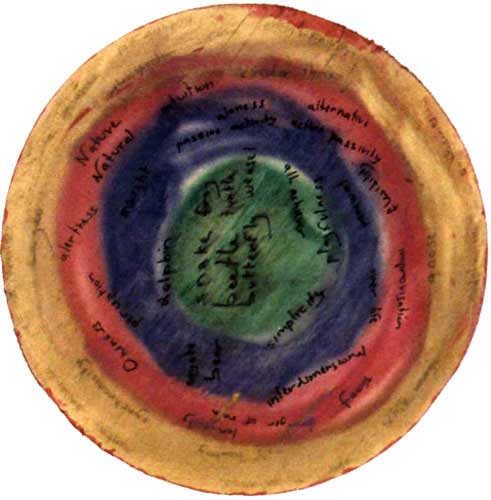
The Unified World of Creatures
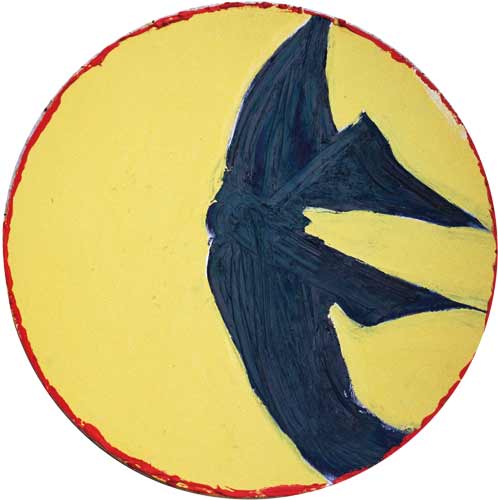
Dragon Moth
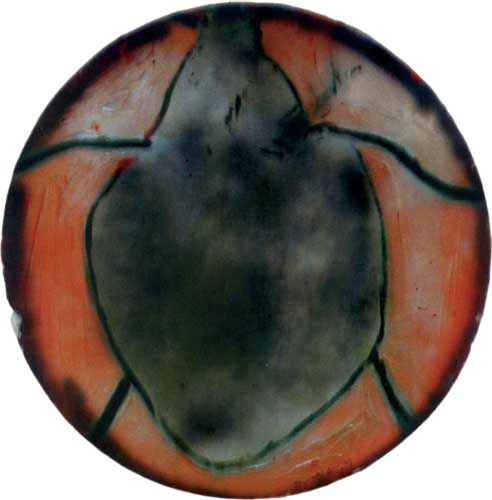
Beetle
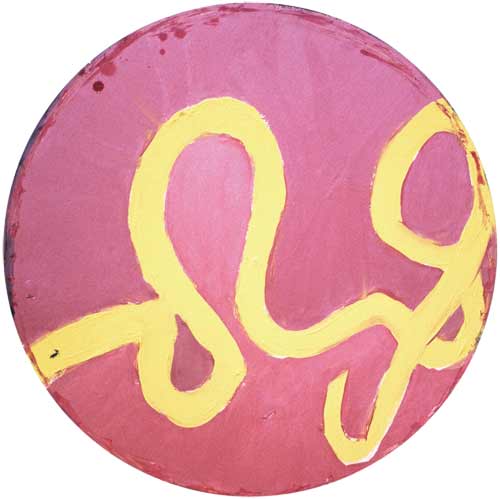
Serpent
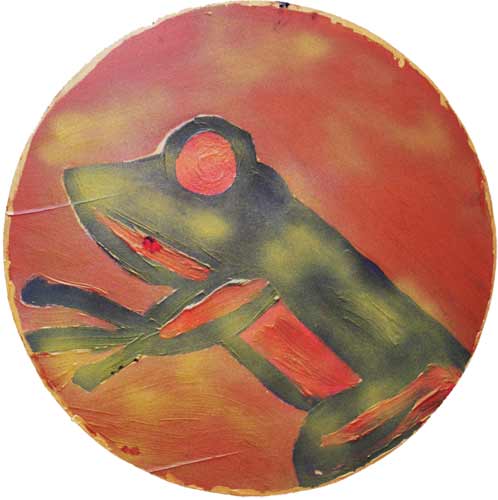
Frog
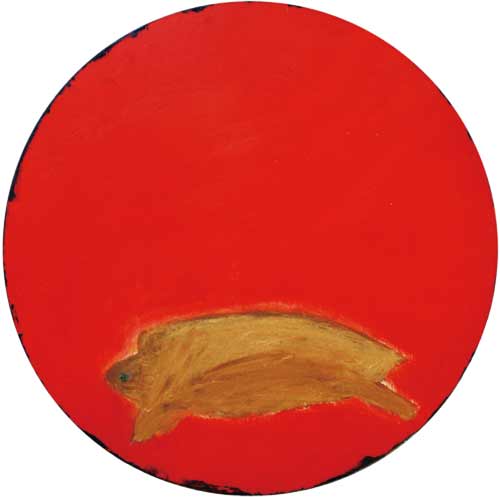
Turtle
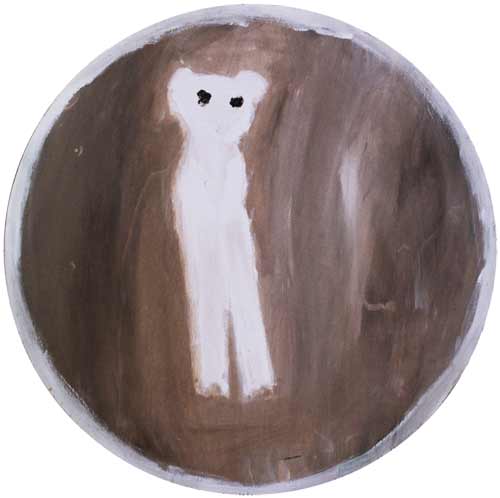
Weasel
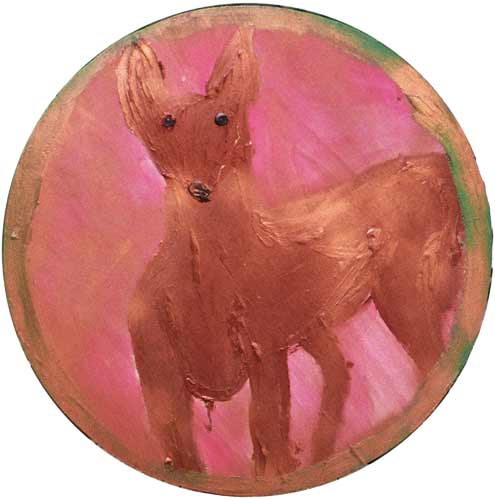
Fox
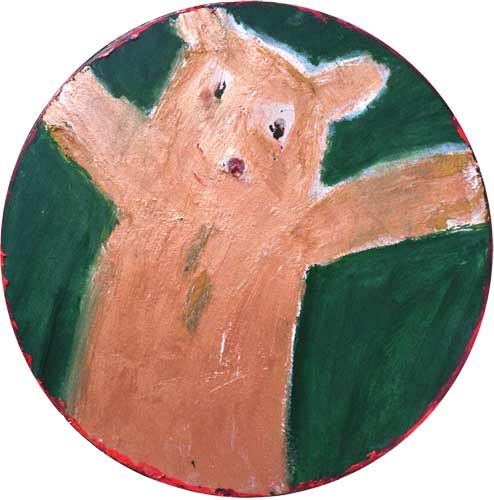
Bear
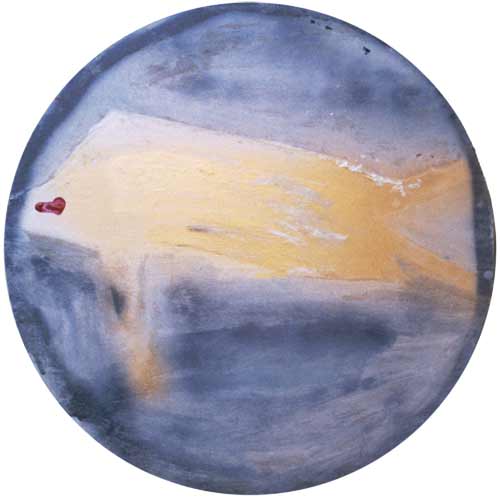
Dolphin
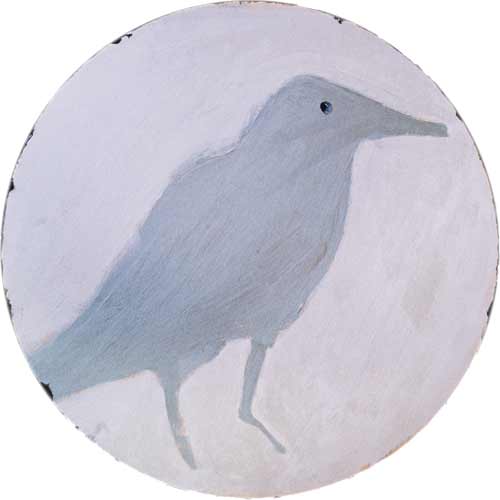
Crow
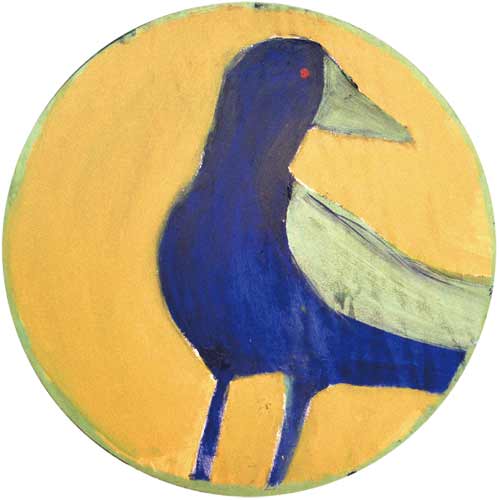
Goose
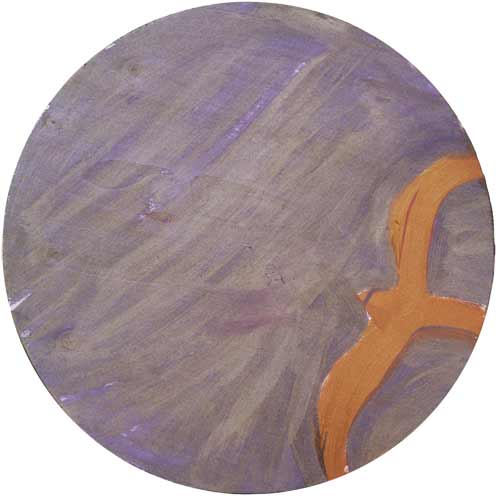
Eagle
~*~*~*~*~
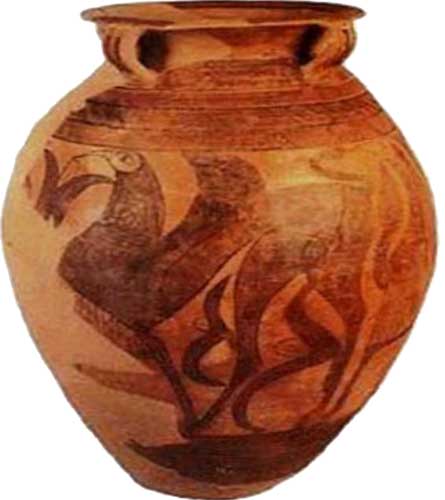
Large earthen jar, part of the Saltillo Ensemble, around 8th century BC. Features a procession of four griffins (mythological beasts) marching from left to right. The original, together with the Ensemble's other pieces, is in the Carmona Municipal Museum.
Chakras serve as a metaphor for energy centers situated along the spine. When the seeker of awareness becomes more and more universal, encompassing more and more facets of the world, the chakras are gradually awakened till the seeker reaches illumination or Infinity.
Chakras teach us tolerance by assimilating sequential lessons. We start with the lesson of building personal, psychological and physical stability, then we adapt flexibility to face the Unknown (Reality and Mystery). We continue with endurance to face bad times, light-mindedness to switch awareness according to changing circumstances and we overcome polarities (male and female) and become active-passive as an inseparable unit. Finally we attain the ability to keep the mind pure and empty so as to reflect what actually IS and not to interpret reality according to territorial patterns and fixations.
According to the thesis of The Book, overcoming outer and inner polarities enables the will to cultivate the tool of tolerance as a daily ethics. Tolerance is not easily comprehended and therefore not instantly attainable. The search for tolerance means a constant awareness and self- observation with reference to the surroundings. Pragmatically, it means the ability to cooperate with the non-familiar, to accept variety as the inherent trait of Nature, and to have the aptitude to envisage The Ineffable or Mystery.
Exercising tolerance as a way of life gradually transforms the closed territorial ego into self-awareness of the changing essence of Life and Death. At last, an attuned awareness leads to a naturally flowing co-existence with everything, every instant.
Tantric Chakras
Indian Philosophy and Metaphysics, Tantra inspire the series on the theme of Chakras.
Chakras are wheels of energy placed along the human spine. Each Chakra is depicted three times, each work reflecting a different aspect. The first aspect illustrates the 5 traditional elements (Earth, Water, Fire, Air, Ether) and the dimensions beyond the obvious material.
The second aspect denotes the traditional abstract symbol of the Chakra, which here obtains a space of its own. (In traditional iconography the abstract symbol constitutes a lesser part of the figurative whole.)
The third aspect wishes to reflect the Energies of the Chakras and their conceptual correspondence to the traditional Judeo-Christian Archangels.
Thus, the Epilogue of The Book of inter-religious Peace is reencountered with its beginnings forming an endless dynamic spiral in the One.
Mulhadara Chakra
Element of Earth
The Anus
Stability
Archangel Uriel (Awakening- God)
Svadhistana Chakra
Element of Water
Genitals
Flexibility
Archangel Gabriel (Strength-God)
Manipura Chakra
Element of Fire
Navel
Vitality, Endurance
Archangel Michael (Praising-God)
Anahata Chakra
Element of Air
Solar plexus, Heart.
Overcoming illusive duality
Archangel Raphael (Healing-God)
Vishuddha Chakra
Element of Ether
Throat
Knowledge beyond subjective and temporal concepts. Communication. Purification
Archangel Zadkiel (Justice-God)
Ajna Chakra
Beyond The Elements
The Third Eye or The Eye of Fire
The All Inclusive Perception, which has overcome illusory separateness. Illumination
Archangel Kamael (In the Image of God)
Soma Chakra
The Ultimate, The Essence, Bindu, The Grain, The One, The Son
Crown of the Head, Lotus.
Bliss, Perfection.
Archangel Raziel (The Enigmatic God)
Archangel Zafiel (The Observing God)
Sahasrara Chakra
The One, Infinity reflected in Multiplicity and the Finite
Archangel Metatron Lord of The Crown and The Kingdom
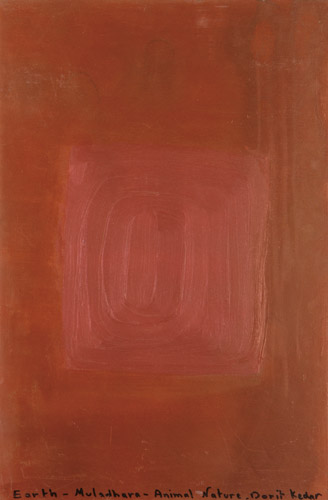
Earth. Mulaadhara – Animal Nature
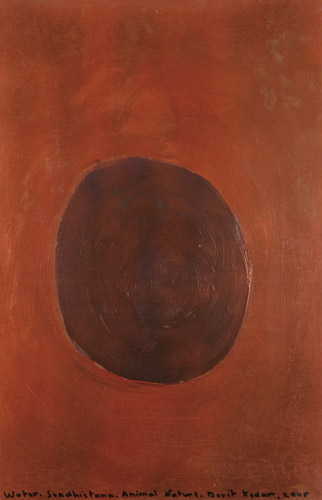
Water. Svadhistana – Animal Nature
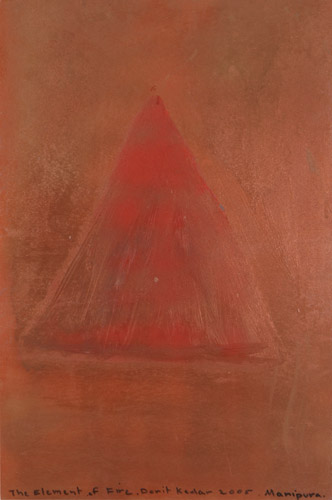
Fire. Manipura – Animal Nature
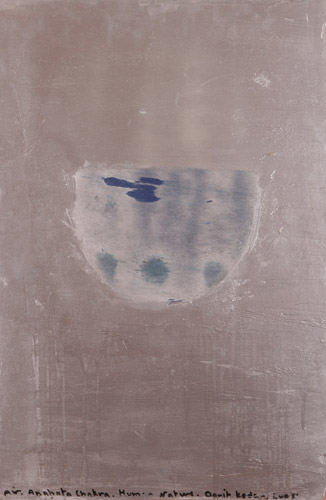
Air. Anahata – Human Nature

Ether. Vishuddha – Human Nature
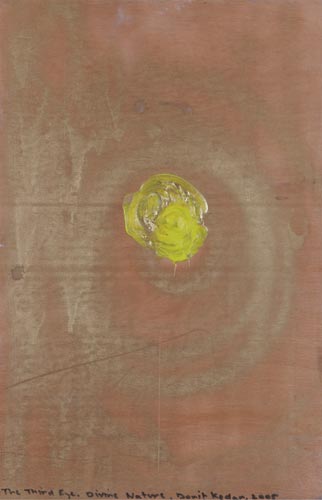
The Third Eye. Ajna - Human Nature
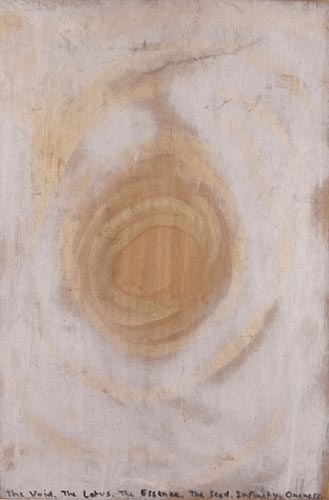
The Lotus. Soma – Divine Nature
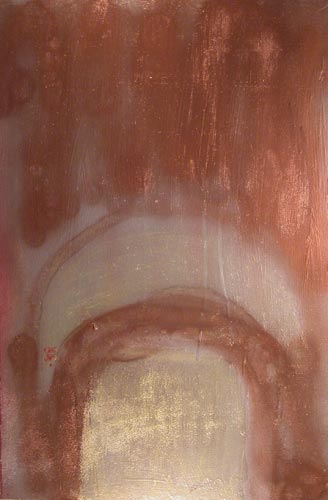
Sahasrara Chakra

Svadhistana – Genitals
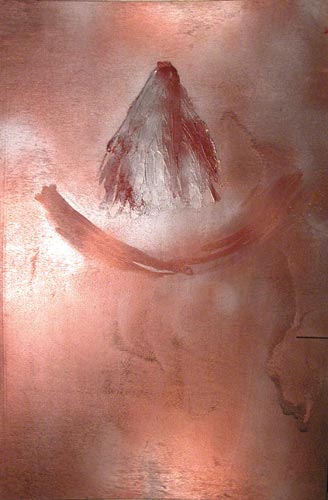
Manipura – Stomach
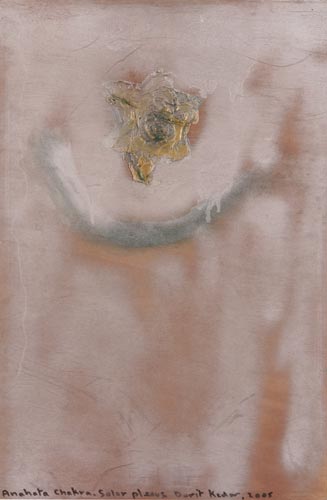
Anahata – Solar Plexus
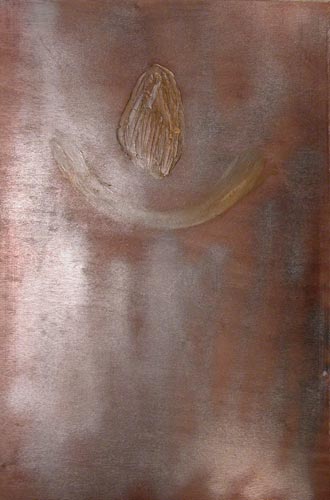
Vishuddha – Throat
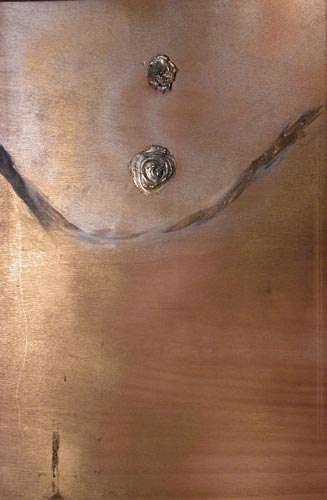
Ajna – The Third Eye

Soma. The Crown of the Head – Divine Nature
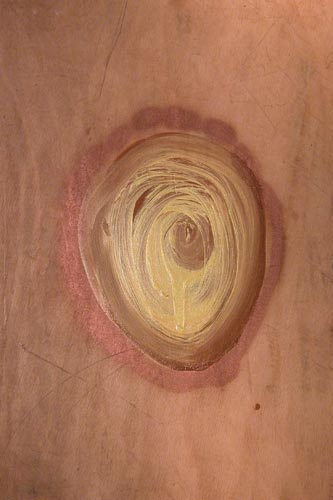
Sahasrara Chakra
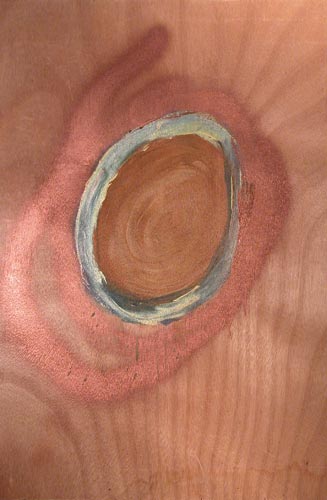
Svadhistana Energy
Archangel Gabriel (Strength-God)
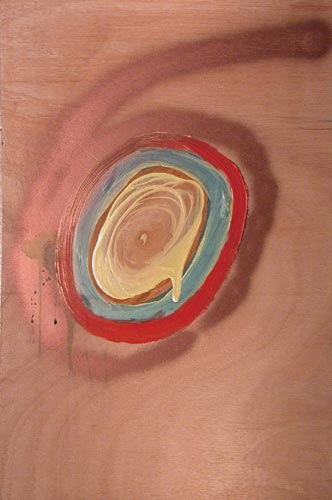
Manipura Energy
Archangel Michael (Praising-God)

Anahata Energy
Archangel Raphael (Healing-God)

Vishuddha Energy
Archangel Zadkiel (Justice-God)
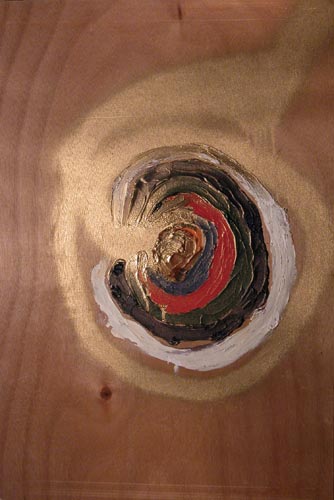
Ajna Energy
Archangel Kamael (In the Image of God)
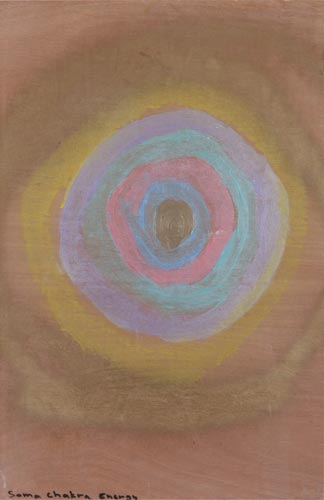
Soma Energy
Archangel Raziel (The Enigmatic God)
Archangel Zafiel (The Observing God)
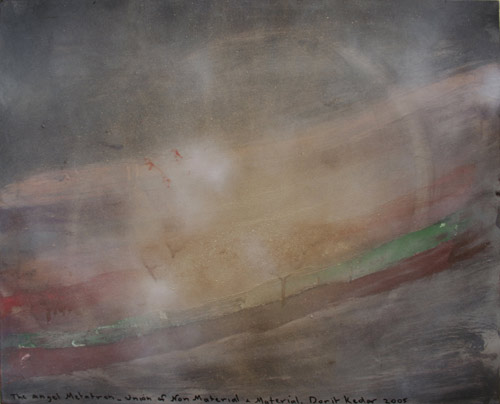
Sahasrara Energy
Archangel Metatron Lord of The Crown and The Kingdom
~*~*~*~*~